Last updated on March 6, 2024
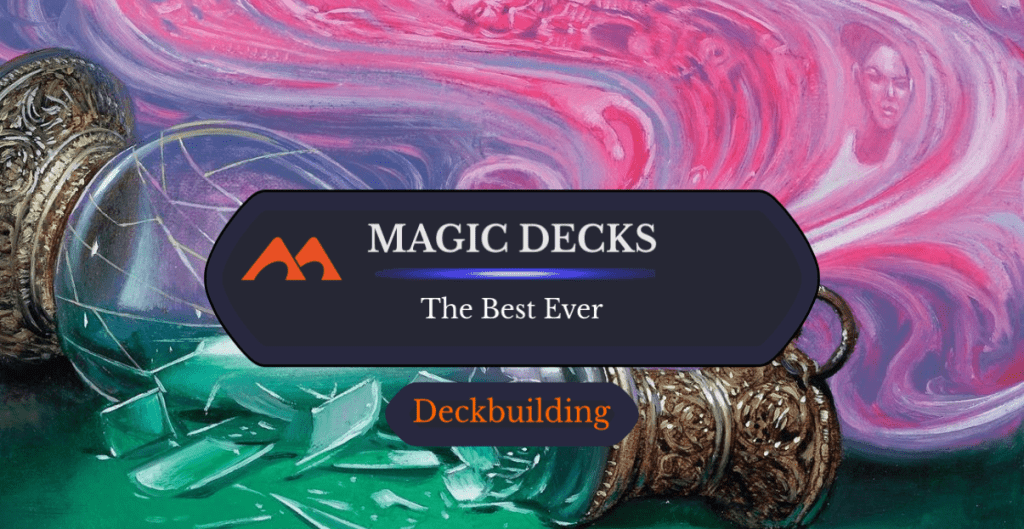
Memory Jar | Illustration by Donato Giancola
Magic: The Gathering is a game with a considerable tenure under its belt. Long ago, we battled with vanilla 2/2s that are now almost nonexistent in competitive Magic, which has evolved since the game's introduction. With that in mind, have you ever wondered which decks have been too broken for a format? Well, you’re in luck, as today I’ll go over the best MTG decks ever created and how they took over games and dominated metas like no others.
I know some may already be at the top of your head, but I bet you’ll find some you probably didn’t know existed.
Intrigued? Let's dive into it!
What Are The Best Decks in MTG?
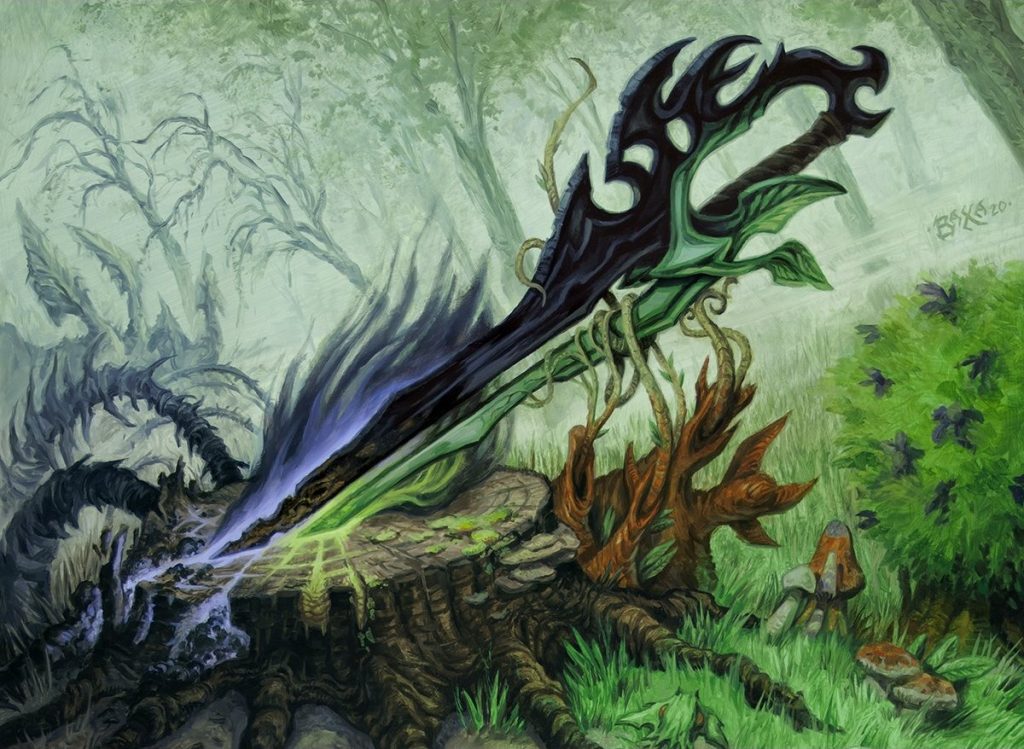
Sword of Feast and Famine (Double Masters) | Illustration by Thomas M. Baxa
When discussing the premier decks in MTG, we often consider the current top-performing deck in a particular format, identifying clear winners. For instance, Rhinos may stand out as a dominant archetype in Modern, while Delver could be a frontrunner in Legacy. Despite their prominence, it's important to note that these decks aren’t invincible. While they exert significant influence over the metagame, they remain reasonably manageable in gameplay.
However, across various formats and numerous annual ban lists, certain decks or cards have proven to be excessively powerful, negatively impacting the overall health of the Magic: The Gathering meta. Today, I'll highlight decks that have been deemed too oppressive for the rest of the field to handle.
Determining the best decks can involve considering factors like the number of tournament wins, overall metagame dominance, or a combination of both.
#15. Caw-Blade
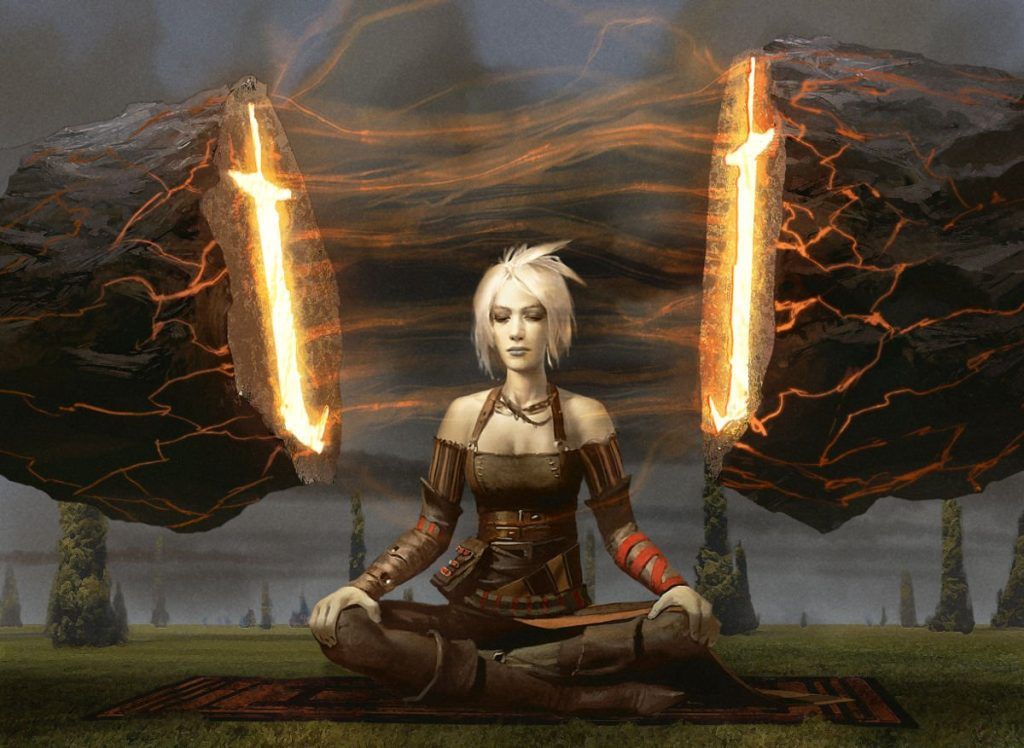
Stoneforge Mystic (Worldwake) | Illustration by Mike Bierek
Planeswalker (7)
Jace, the Mind Sculptor x4
Gideon Jura x3
Creature (8)
Squadron Hawk x4
Stoneforge Mystic x4
Instant (8)
Spell Pierce x3
Lightning Bolt x3
Mana Leak x2
Sorcery (8)
Preordain x4
Day of Judgment x4
Artifact (2)
Sword of Body and Mind
Sword of Feast and Famine
Land (27)
Arid Mesa x4
Celestial Colonnade x3
Evolving Wilds x2
Glacial Fortress x2
Island x3
Mountain x3
Plains x4
Scalding Tarn x3
Seachrome Coast x3
Sideboard (15)
Cunning Sparkmage x4
Sun Titan
Inferno Titan
Dispel
Divine Offering x3
Flashfreeze x4
Basilisk Collar
You may think that one of the most infamous decks in Magic history may be a little bit low on the list, and frankly, it would if not for the fact that the other ones can aim to win on turn 1.
Originating from Brian Kibler's creation named Caw-Go, Caw-Blade in Standard was a deck that relied on seemingly fair creatures like Squadron Hawk (this is where the “caw” derived) to search for other copies of it. While the deck ran decent countermagic spells like Mana Leak and Spell Pierce to control the tempo of the deck, the key card was Jace, the Mind Sculptor.
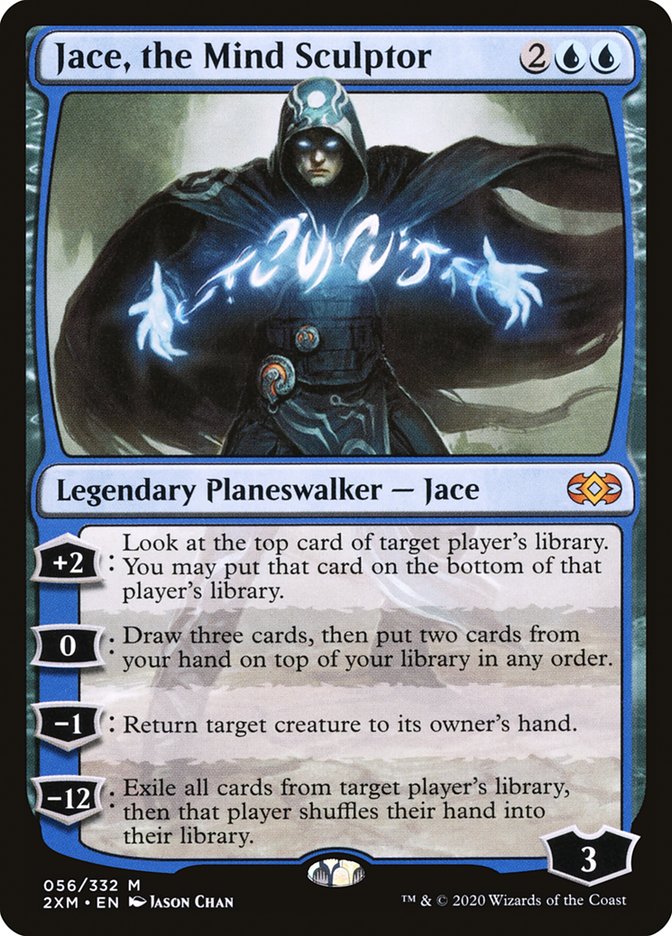
With its 0-loyalty ability, it basically added a Brainstorm effect to the deck, which resulted in shuffling away your extra copies of Squadron Hawk that then can be re-fetched when you play a copy of it, allowing you to get access to more cards from your library without losing value.
What sealed the deal for this deck was the introduction of Sword of Feast and Famine in Mirrodin Besieged and Batterskull from New Phyrexia. Along with Stoneforge Mystic, it suddenly turned into a situation where you had to kill the latter on turn 2. Otherwise, Batterskull would take over the game on the following turn, not to mention that the hawks were particularly great carriers of the sword, as you can untap your lands, keeping up countermagic and making sure you got enough mana to interact with your opponents’ spells or allowing you to cast more spells.
At the end of the day, these proved too powerful for the Standard meta, and both Jace, the Mind Sculptor and Stoneforge Mystic were banned.
#14. Pauper Chatterstorm
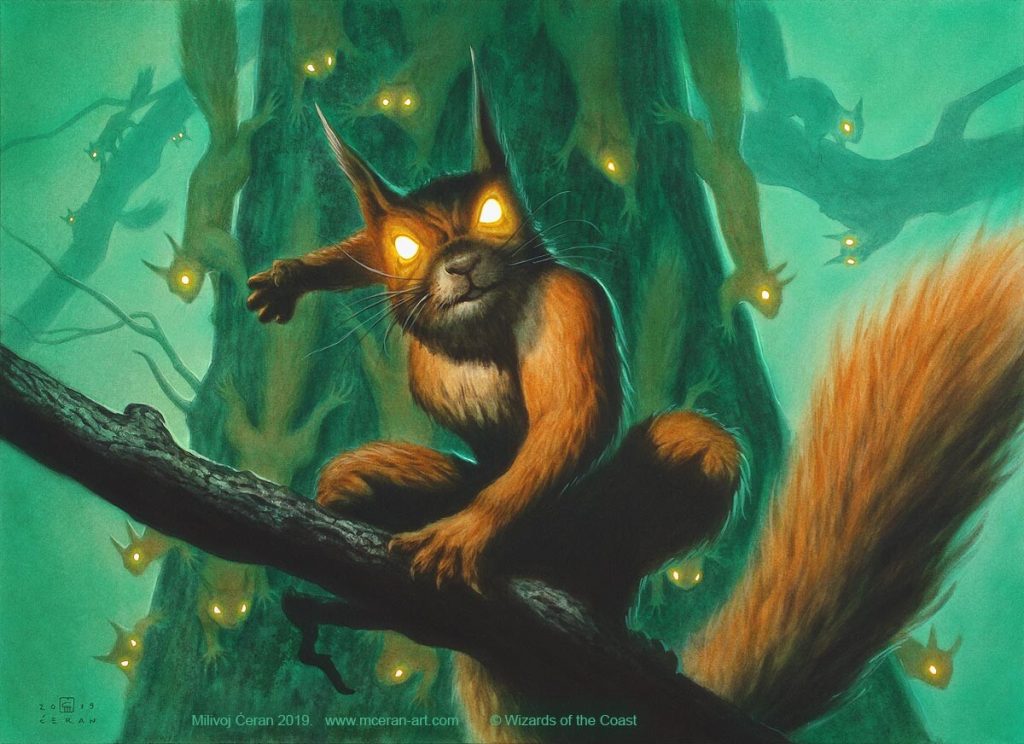
Chatterstorm | Illustration by Milivoj Ceran
Instant (16)
Dark Ritual x4
Cabal Ritual x4
Manamorphose x4
First Day of Class x4
Sorcery (22)
Faithless Looting x2
Rite of Flame x4
Night's Whisper x4
Sign in Blood x4
Chatterstorm x4
Galvanic Relay x4
Artifact (10)
Lotus Petal x4
Chromatic Sphere x2
Chromatic Star x4
Land (12)
What started as a meme in Pauper quickly became one of the fastest bans in the format's history. While it may not compare in terms of power level to other best-ever decks, this one could kill you on turn 1 or 2, depending on your luck, with very consistent turn-3 kills.
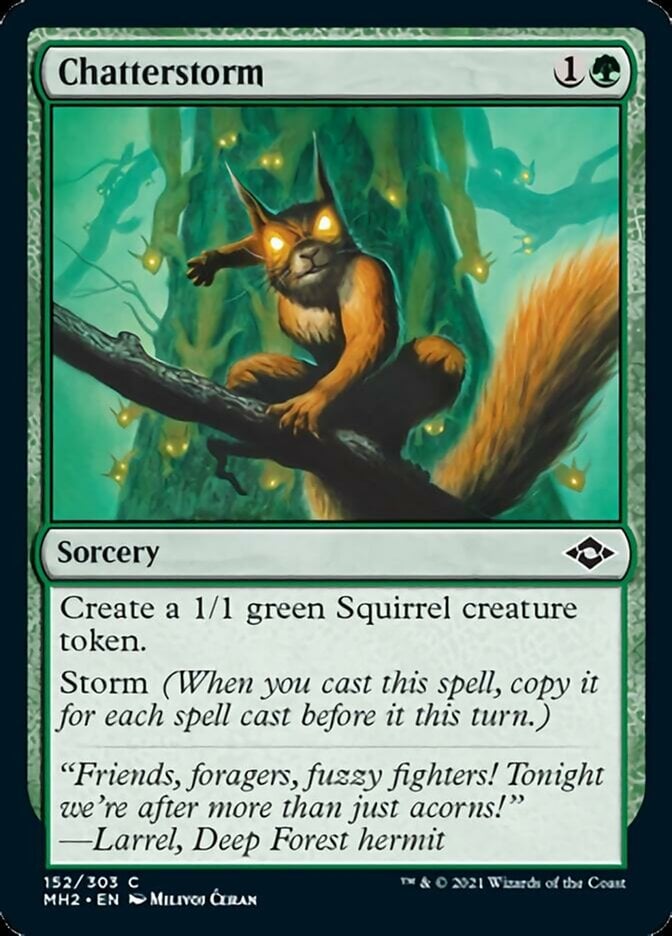
After a little bit less than a month, Chatterstorm was banned from the format, and Galvanic Relay followed soon after.
#13. Modern Cloudpost
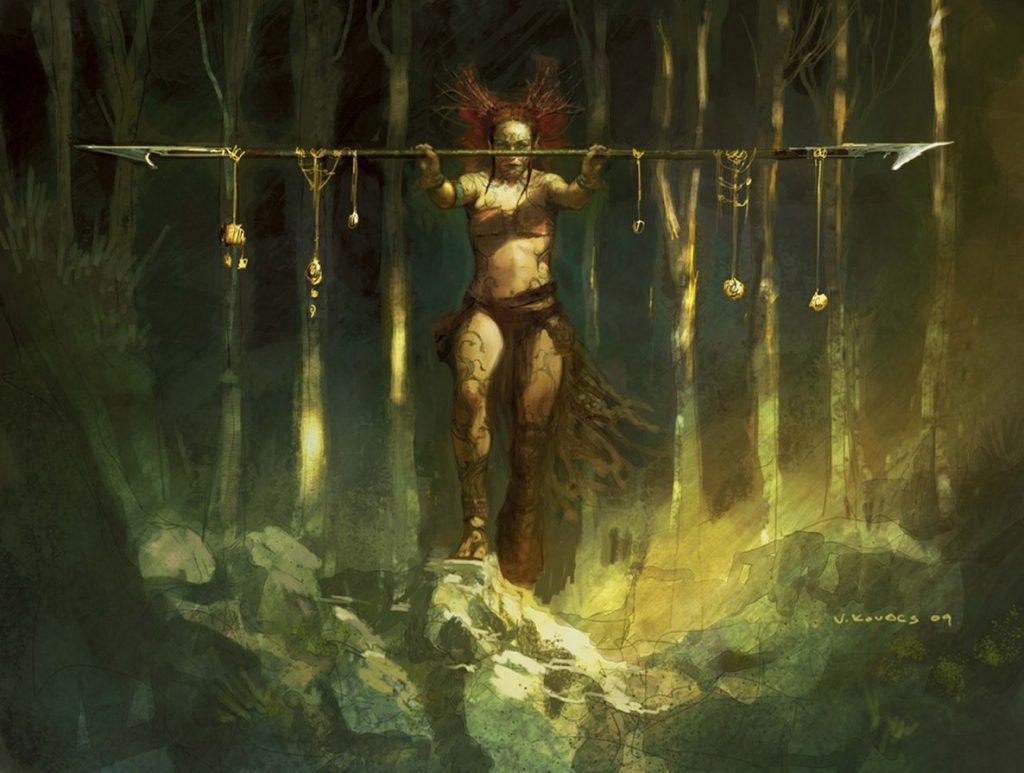
Oracle of Mul Daya | Illustration by Vance Kovacs
Creature (21)
Dryad Arbor
Overgrown Battlement x4
Sakura-Tribe Elder
Wall of Roots x4
Oracle of Mul Daya
Primeval Titan x4
Terastodon
Ulamog, the Infinite Gyre
Emrakul, the Aeons Torn x4
Instant (7)
Beast Within x3
Through the Breach x4
Sorcery (4)
Artifact (4)
Gruul Signet x4
Land (24)
Cloudpost x4
Eye of Ugin
Forest x3
Glimmerpost x4
Grove of the Burnwillows x4
Misty Rainforest x2
Mountain
Stomping Ground
Vesuva x4
Sideboard (15)
Qasali Pridemage
Brooding Saurian
Firespout x3
Punishing Fire x3
Dismember x2
Seal of Primordium x2
Chalice of the Void x3
One of the dominant decks on the first-ever Modern Pro Tour was Cloudpost. Back in 2011 in Philadelphia, this deck ran 12 “Locus” lands in the form of Cloudpost, Glimmerpost, and Vesuva (which can copy either of the first two). With the right combination of lands, you can have up to 9 mana by turn 3, and since you ran mana filters like Gruul Signet, you can use it to cast your green spells like Primeval Titan to get you more lands or search for your Titan with Green Sun's Zenith.
If that somehow fails, you could always cheat an Emrakul, the Aeons Torn into play with Through the Breach to destroy your opponent’s resources.
After this Pro Tour, in September 2011, both Cloudpost and Green Sun's Zenith were banned from the format.
#12. Omnath Lucky Clover
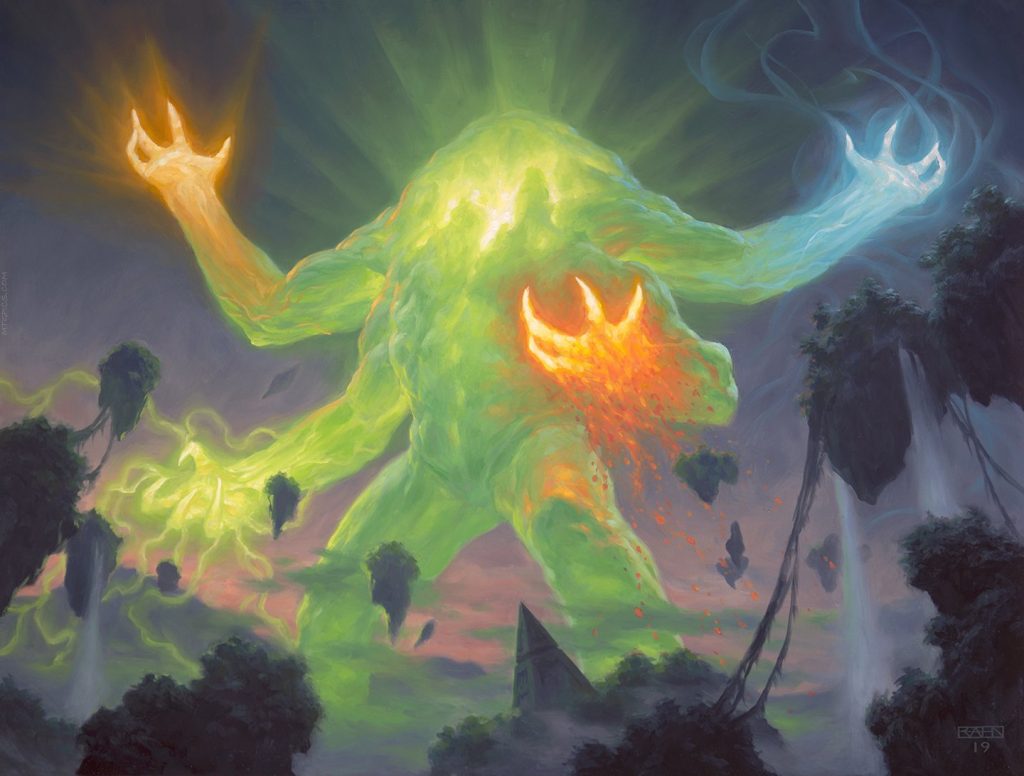
Omnath, Locus of Creation | Illustration by Chris Rahn
Creature (25)
Giant Killer
Edgewall Innkeeper x4
Fae of Wishes x4
Brazen Borrower x4
Bonecrusher Giant x4
Omnath, Locus of Creation x4
Beanstalk Giant x4
Sorcery (3)
Artifact (4)
Lucky Clover x4
Land (28)
Branchloft Pathway x3
Cragcrown Pathway x3
Fabled Passage x4
Forest x4
Island x5
Ketria Triome x3
Mountain x2
Plains
Raugrin Triome x3
Sideboard (15)
Ugin, the Spirit Dragon
Chainweb Aracnir x2
Shatter the Sky
Storm's Wrath
Escape to the Wilds
Redcap Melee
Negate
Fling
Return to Nature
Mystical Dispute
Neutralize
Banishing Light
Soul-Guide Lantern
Branchloft Pathway
This is a funny one because it’s a deck that was around when I started to play Magic mid-pandemic. To my surprise, Standard was broken, and the card that caused it was Omnath, Locus of Creation.
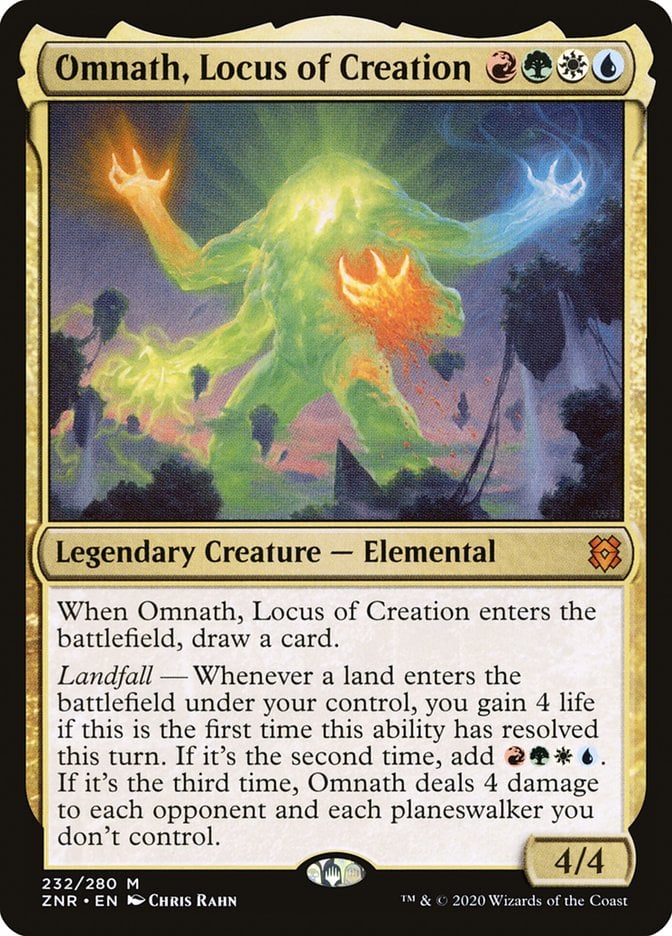
The adventure package of the deck, alongside Lucky Clover, made a mighty deck to face already, but with the introduction of the elemental, it went into a whole new level. Suddenly, all Standard tournaments were filled with the same deck, Omnath Adventures.
According to Frank Karsten, its ban from Standard took only 17 days.
#11. Simic Oko
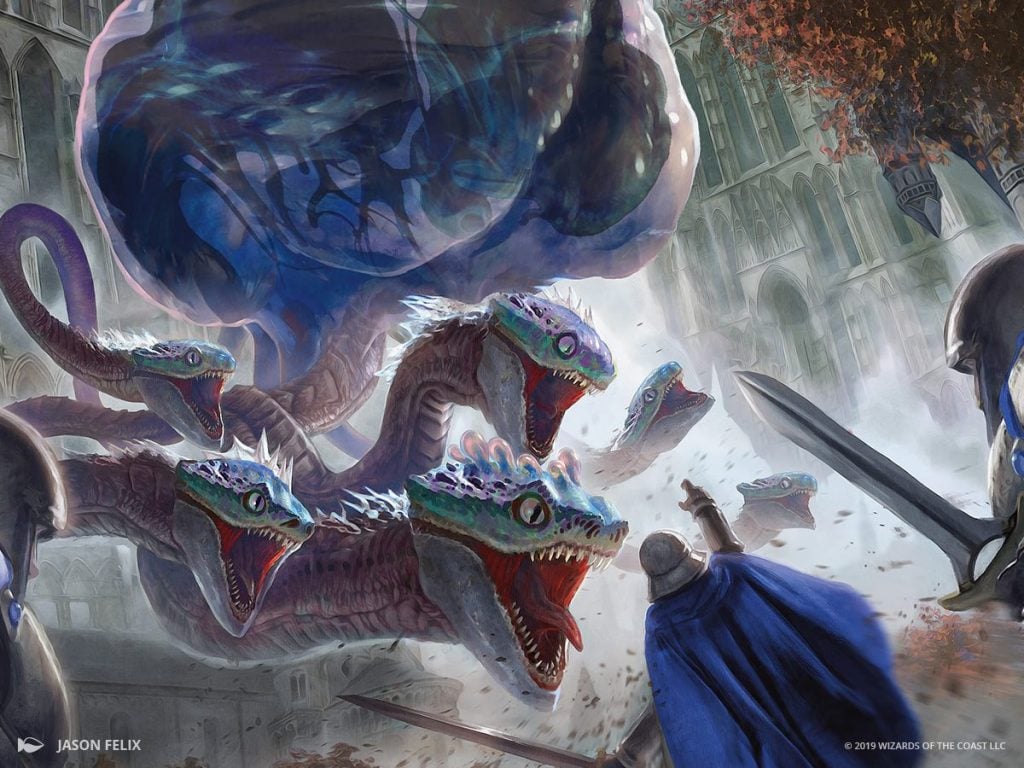
Hydroid Krasis | Illustration by Jason Felix
Planeswalker (7)
Oko, Thief of Crowns x4
Nissa, Who Shakes the World x3
Creature (17)
Gilded Goose x4
Hydroid Krasis x4
Paradise Druid x4
Brazen Borrower x2
Wicked Wolf x3
Instant (8)
Aether Gust x4
Once Upon a Time x4
Sorcery (2)
Land (26)
Breeding Pool x4
Castle Vantress x2
Fabled Passage
Forest x10
Island x7
Temple of Mystery x2
Sideboard (15)
Nissa, Who Shakes the World
Voracious Hydra x2
Gadwick, the Wizened
Questing Beast x2
Wicked Wolf
Veil of Summer x4
Negate x2
Mystical Dispute x2
For a few months during 2019, this deck dominated the Standard meta.
It starts with powerful cards like Oko, Thief of Crowns and Once Upon a Time that provided consistency to the deck. The planeswalker, in particular, is a strong one that has been banned in almost every format it has touched.
The Mythic Championship VI tournament was the one that set the alert as six copies of the deck were present in the top eight.
#10. Modern Eldrazi
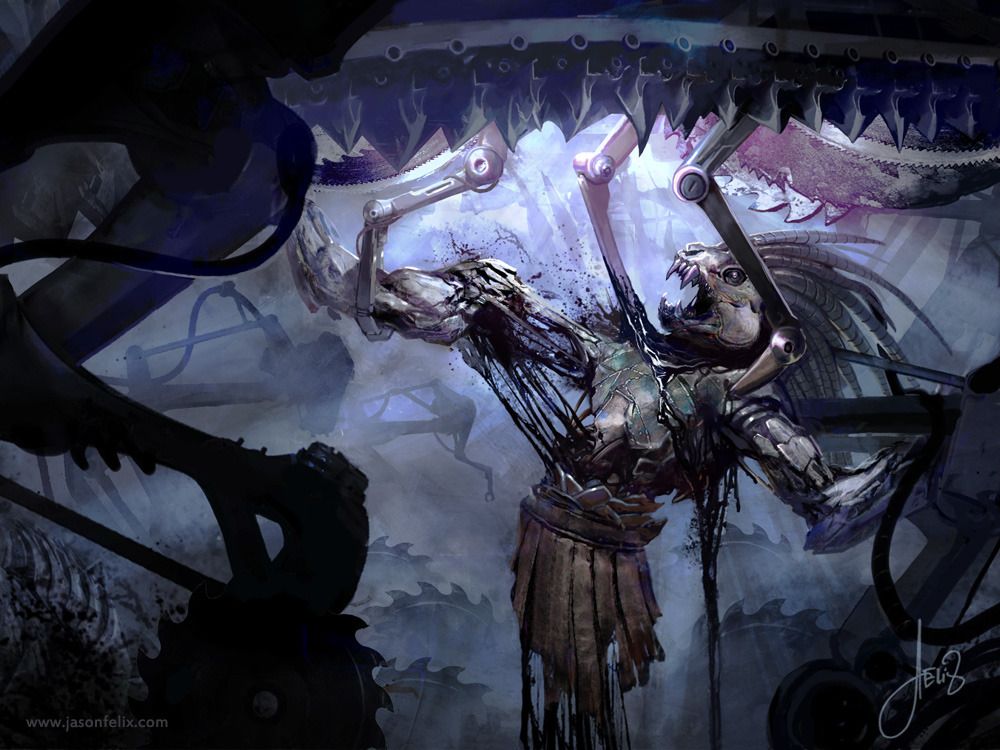
Dismember | Illustration by Jason Felix
Creature (26)
Endless One x4
Eldrazi Mimic x4
Spellskite x2
Matter Reshaper x4
Simian Spirit Guide x4
Thought-Knot Seer x4
Reality Smasher x4
Instant (4)
Dismember x4
Artifact (6)
Chalice of the Void x4
Ratchet Bomb x2
Land (24)
Blinkmoth Nexus x4
Eldrazi Temple x4
Eye of Ugin x4
Ghost Quarter x4
Mutavault x3
Urborg, Tomb of Yawgmoth x3
Wastes x2
Sideboard (15)
Spellskite
Oblivion Sower x3
Gut Shot x3
Warping Wail
Pithing Needle x2
Relic of Progenitus x4
Ratchet Bomb
Eye of Ugin is a card that makes your Eldrazi spells cost 2 mana less. At the time of the printing, this was no major problem, mainly because the only Eldrazi worth playing at the time were the original big three: Ulamog, the Infinite Gyre, Emrakul, the Aeons Torn, and Kozilek, Butcher of Truth.
This changed with the introduction of Oath of the Gatewatch as new, cheaper, and more aggressive Eldrazi were added to the game, like Matter Reshaper or Thought-Knot Seer. Alongside Eldrazi Temple, which isn’t legendary, it created very potent turns where players couldn't really interact with oversized creatures with excellent ETB effects or that had haste that could start pressure opponents early.
It was legal in Modern for about two months until Eye of Ugin was eventually banned. Still, during that period, it amassed a considerable number of Grand Prix and Pro Tour top eights combined, being one of the most potent and broken Modern decks that ever existed.
#9. Modern Hogaak

Hogaak, Arisen Necropolis | Illustration by Vincent Proce
Creature (28)
Carrion Feeder x4
Gravecrawler x4
Stitcher's Supplier x4
Insolent Neonate x4
Bloodghast x4
Vengevine x4
Hogaak, Arisen Necropolis x4
Sorcery (4)
Enchantment (5)
Bridge from Below x4
Leyline of the Void
Artifact (4)
Land (19)
Blackcleave Cliffs x4
Blood Crypt x4
Bloodstained Mire x4
Godless Shrine
Marsh Flats x4
Polluted Delta
Swamp
Sideboard (15)
Wispmare x4
Ingot Chewer x2
Shenanigans
Darkblast
Fatal Push x2
Leyline of the Void x3
Silent Gravestone x2
In June 2019, Modern Horizons was released, and with it came Hogaak, Arisen Necropolis.

With convoke and delve as the main keywords, slamming it onto the battlefield as early as turn 2 was very easy.
It was initially paired with Altar of Dementia and Bridge from Below to create a perfect graveyard sacrifice deck that used Hogaak to overperform in Modern.
WotC initially decided to ban Bridge from Below, but as time passed, Hogaak strategies continued to dominate the meta, and in August of 2019, the signature card of the deck finally got banned.
#8. Mirrodin Affinity

Meddling Mage | Illustration by Todd Lockwood
Creature (26)
Arcbound Worker x4
Disciple of the Vault x4
Arcbound Ravager x4
Meddling Mage x4
Frogmite x4
Somber Hoverguard x3
Myr Enforcer x3
Sorcery (4)
Thoughtcast x4
Artifact (25)
Ancient Den x2
Darksteel Citadel x4
Seat of the Synod x4
Vault of Whispers x4
AEther Vial x4
Chromatic Sphere x4
Cranial Plating x3
Land (5)
Blinkmoth Nexus x2
City of Brass
Glimmervoid x2
Sideboard (0)
Creature (15)
Kami of Ancient Law x3
Cabal Therapy x3
Seal of Removal x2
Chill x3
Engineered Plague x3
City of Brass
With the release of Darksteel, the second expansion of the Mirrodin block, Standard became dominated by the appearance of affinity decks that quickly overpowered many decks from the format thanks to the use and abuse of Arcbound Ravager, Disciple of the Vault, and Skullclamp.
Eventually, this deck also transitioned into extended winning Pro Tour Columbus in 2005 in the hands of Pierre Canali.
Historically, the affinity mechanic as a whole has been very problematic, forcing bans in many formats like Legacy, Modern, and even Pauper, where the deck has suffered many nerfs, and it's still one of the most potent strategies around.
#7. Tibalt’s Trickery

Tibalt's Trickery | Illustration by Anna Podedworna
Creature (4)
Instant (5)
Tibalt's Trickery
Violent Outburst x4
Land (51)
Cragcrown Pathway x3
Field of the Dead x2
Forest
Forgotten Cave x4
Gemstone Caverns x4
Ketria Triome x2
Khalni Garden x4
Mountain
Nephalia Academy x4
Snow-Covered Forest
Snow-Covered Mountain
Stomping Ground x4
Temple of Abandon x4
Temple of Epiphany x4
Temple of Mystery x4
Tranquil Thicket x4
Wooded Foothills x4
Sideboard (15)
Jegantha, the Wellspring
Ulamog, the Ceaseless Hunger
Emrakul, the Promised End
Blast Zone x4
Mutavault x4
Radiant Fountain x4
Broken decks have the tendency to abuse cards with cascade. The “trick” was to hit the single Tibalt's Trickery and cast an Emrakul.
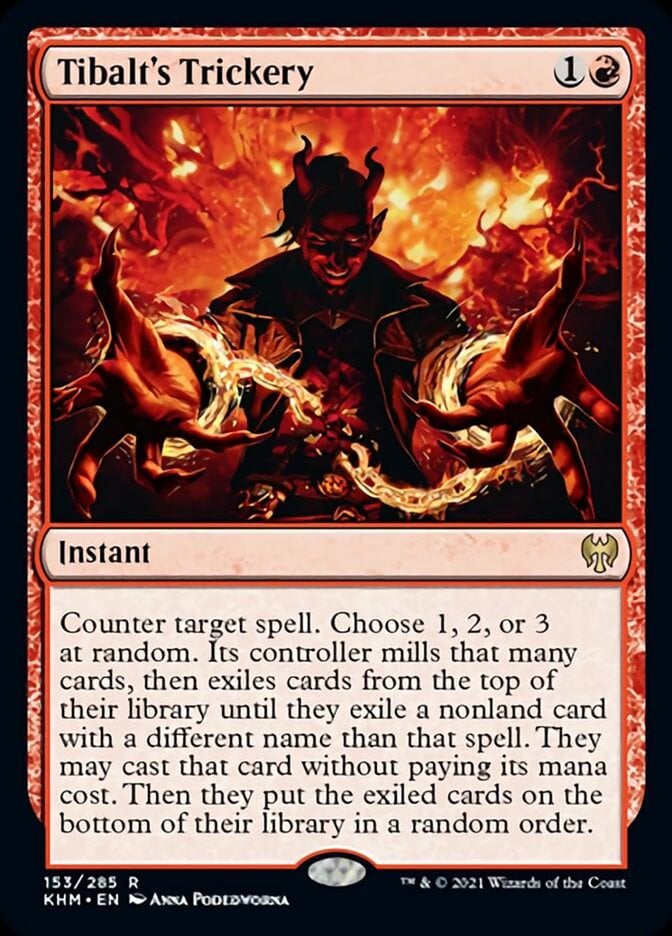
The deck was so silly that it only lasted into Modern ten days before it was banned, but since it was in the middle of the pandemic, it never had the chance to shine in paper tournaments.
#6. Flash Hulk
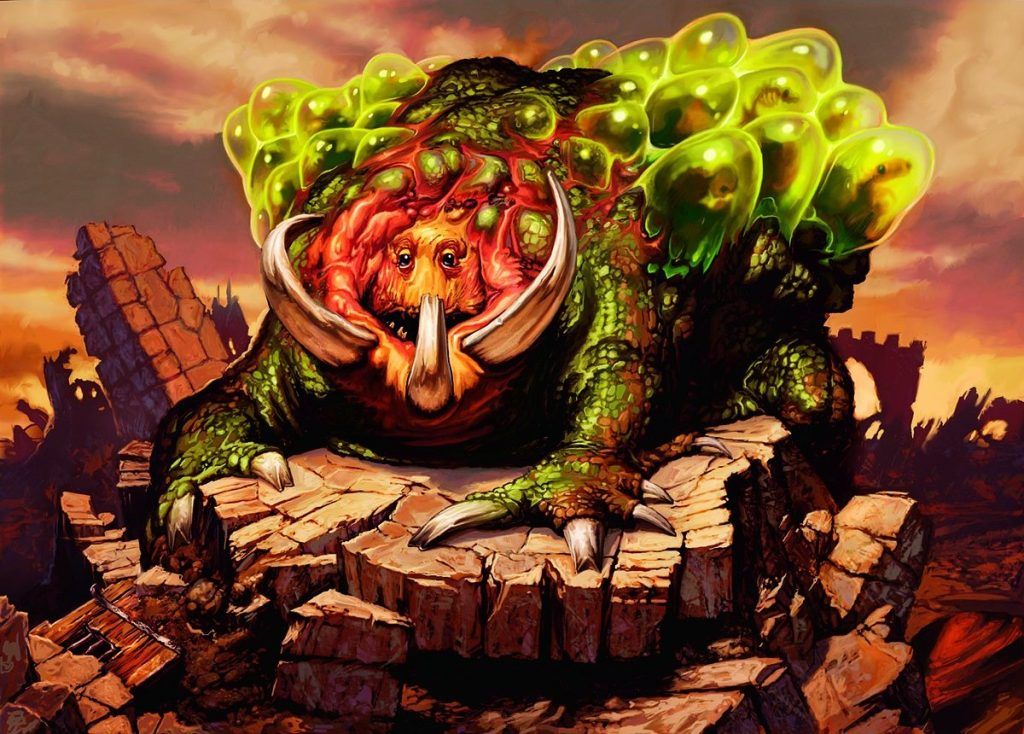
Protean Hulk | Illustration by Matt Cavotta
Creature (12)
Carrion Feeder
Dark Confidant x4
Body Snatcher
Karmic Guide
Kiki-Jiki, Mirror Breaker
Protean Hulk x4
Instant (21)
Brainstorm x4
Mystical Tutor x4
Daze x4
Echoing Truth
Flash x4
Force of Will x4
Sorcery (1)
Enchantment (4)
Artifact (8)
Chrome Mox x4
Sensei's Divining Top x4
Land (14)
Flooded Strand x3
Island x3
Polluted Delta x4
Swamp
Tropical Island
Tundra
Underground Sea
Sideboard (15)
Quirion Dryad x4
Massacre x3
Reverent Silence
Swords to Plowshares x3
Leyline of the Void x4
Flash Hulk was a deck that was eventually banned from Legacy, given the interaction between Flash and Protean Hulk.
For just 2 mana, you can put the latter into play and immediately sacrifice it to search for multiple creatures that give you an instant win combo. The first appearance of the deck was in Grand Prix Columbus in 2007, with a significant representation in the meta and three copies of it in the top 8, including the first place, Steven Sadin, who managed to steamroll the competition.
His combo consisted pretty much of using both signature cards of the deck to tutor for Karmic Guide and Carrion Feeder, returning Protean Hulk to the battlefield with the spirit’s ability. From there, you sacrifice the Hulk with the Feeder’s ability to fetch for a Kiki-Jiki, Mirror Breaker that can make a copy of the Karmic Guide, and with the goblin’s trigger on the stack, you sacrifice it to the Carrion Feeder to return it with the spirit's ability again. From there, you can make infinite copies of the spirit with haste and win the game.
Subsequently, on June 1st, 2007, Flash was banned from Legacy.
#5. Hypergenesis
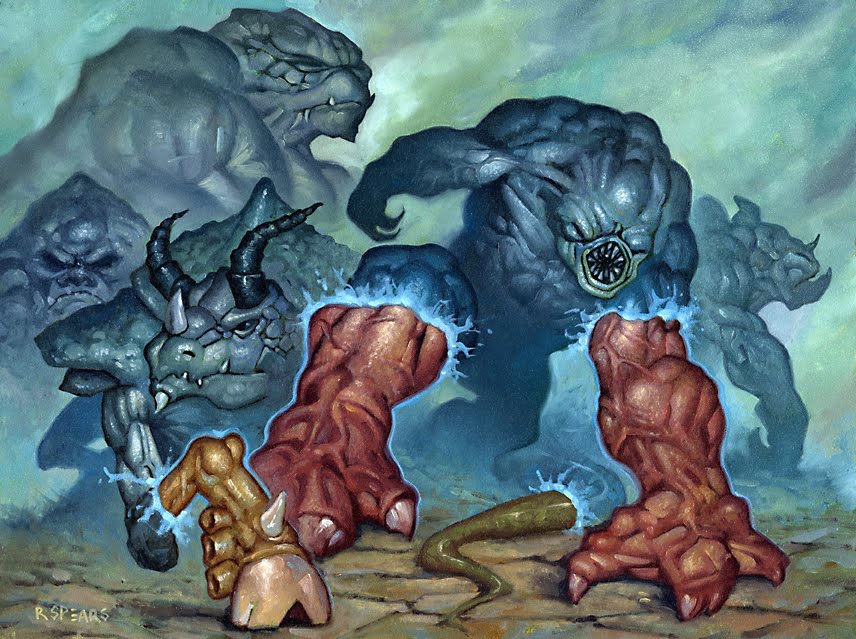
Hypergenesis | Illustration by Ron Spears
Creature (21)
Simian Spirit Guide x4
Angel of Despair x4
Sundering Titan x4
Bogardan Hellkite x4
Akroma, Angel of Fury
Progenitus x4
Instant (7)
Thirst for Knowledge x3
Violent Outburst x4
Sorcery (8)
Hypergenesis x3
Demonic Dread x2
Firespout x3
Enchantment (4)
Ardent Plea x4
Land (21)
Calciform Pools
Forbidden Orchard x4
Fungal Reaches x3
Gemstone Caverns
Gemstone Mine x4
Reflecting Pool x4
Tendo Ice Bridge x4
Sideboard (15)
Meddling Mage x3
Vexing Shusher x3
Venser, Shaper Savant x3
Ingot Chewer
Akroma, Angel of Fury
Firespout
Putrefy x2
Fungal Reaches
The infamous Hypergenesis combo involves casting a 3-mana spell with cascade, like Violent Outburst, enabling an immediate Hypergenesis cast. This deck excels in quickly summoning powerful creatures like Angel of Despair, potentially in the first turn as cards like Gemstone Mine or Simian Spirit Guide enabled the feat.
This was an extremely good deck in Extended, which made the top eight in Pro Tour Austin of 2009. It has been banned since then and was initially put on the Modern ban list. It has never left that place since the format was introduced.
#4. Academy Combo
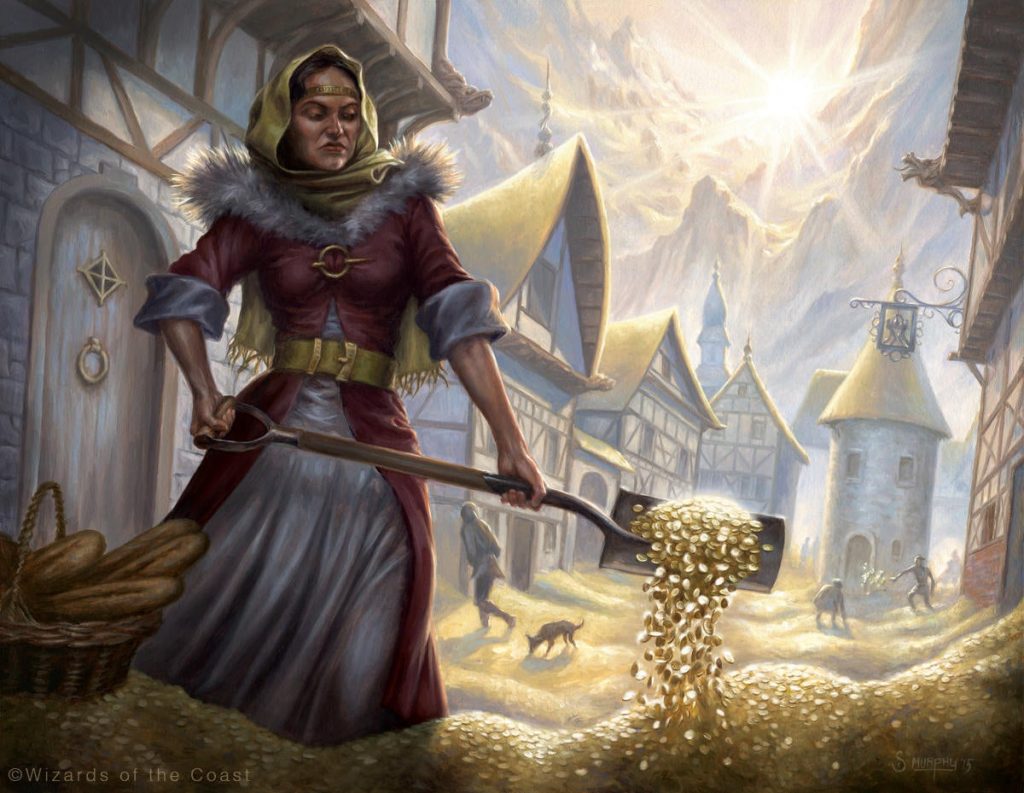
Windfall | Illustration by Scott Murphy
Instant (13)
Power Sink x3
Abeyance x3
Stroke of Genius x4
Intuition x3
Sorcery (8)
Windfall x4
Time Spiral x4
Enchantment (3)
Artifact (17)
Lotus Petal x4
Mox Diamond x4
Mana Vault x4
Voltaic Key x3
Scroll Rack x2
Land (19)
Ancient Tomb x4
City of Brass x3
Tolarian Academy x4
Tundra x4
Volcanic Island x4
Sideboard (15)
Gorilla Shaman x4
Red Elemental Blast x2
Arcane Denial
Chill x4
Wasteland x4
The Combo Winter era is often referred to as the metagame after the release of Urza's Saga between 1998 and 1999. Many cards were banned in between as many overpowered combo decks reigned in tournaments.
One of these was Academy, named after Tolarian Academy, which added mana equal to the number of artifacts in play you controlled. Paired alongside Mind Over Matter, this two-card combo generated seemingly infinite mana, which later could be used to cast Stroke of Genius to draw more cards and eventually kill an opponent with a second copy of Stroke of Genius.
The deck didn’t live long enough, though, as key cards like Mind Over Matter and Windfall were banned soon after its major competitive appearance.
#3. High Tide

High Tide | Illustration by Marc Simonetti
Creature (1)
Instant (29)
Brainstorm
High Tide x4
Mystical Tutor
Arcane Denial x2
Impulse x4
Counterspell x4
Stroke of Genius x3
Frantic Search x3
Turnabout x3
Force of Will x4
Sorcery (7)
Merchant Scroll x3
Time Spiral x4
Land (23)
Island x16
Thawing Glaciers x4
Volcanic Island x3
Sideboard (15)
Ophidian x4
Hydroblast x4
Pyroblast x4
Null Rod x2
Mountain
At this point, we all know that in his prime, Kai Budde couldn’t lose on Sunday until he decided to retire to give others a chance to win at competitive magic.
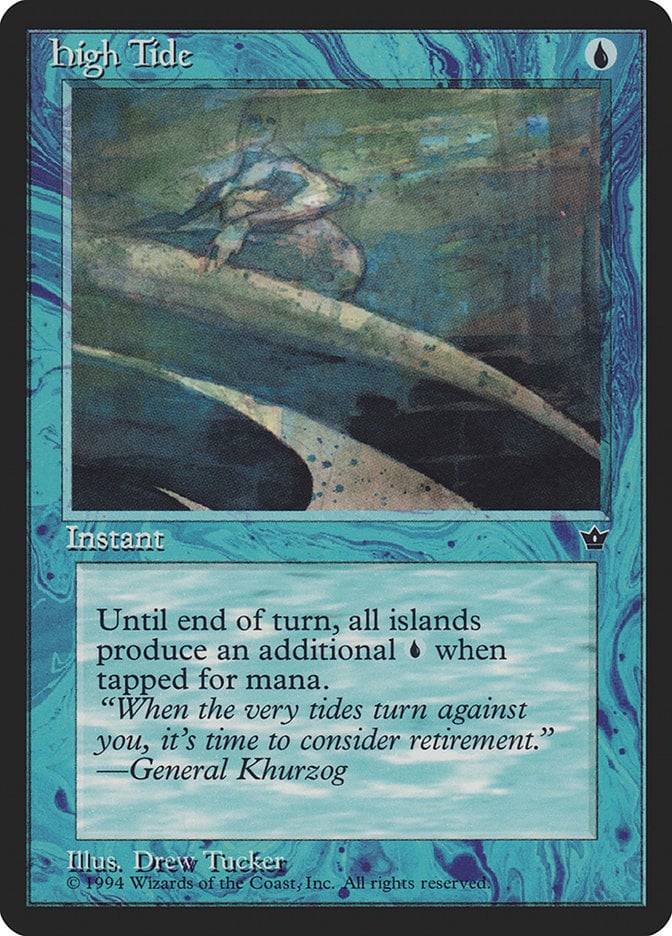
One of his iconic decks was High Tide, a mono-blue combo deck that secured Kai’s victory at Grand Prix Vienna in 1999.
The core strategy is centered around the namesake card, High Tide, to add extra mana every time an island is tapped. With it, you could then cast spells like Frantic Search, Palinchron, and Time Spiral, which are virtually free as they untap mana every time they resolve, leaving the player with seemingly infinite mana to spare and end games by casting a Stroke of Genius targeting your opponent to make them draw more than their entire library total. This deck was often referred to as “the purest and most beautiful control deck ever devised”.
#2. Necropotence
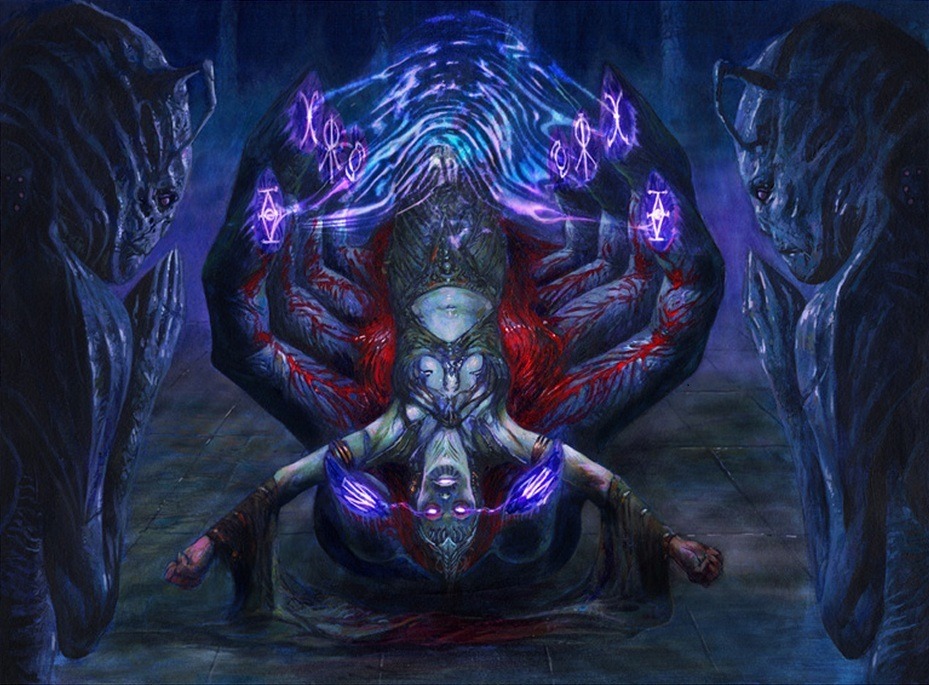
Necropotence | Illustration by Dave Kendall
Creature (9)
Knight of Stromgald x4
Order of the Ebon Hand x4
Ihsan's Shade
Instant (15)
Demonic Consultation x4
Firestorm x2
Lightning Bolt x4
Disenchant x3
Incinerate x2
Sorcery (8)
Drain Life x4
Hymn to Tourach x4
Enchantment (4)
Necropotence x4
Land (24)
Bad River x2
Badlands x4
Gemstone Mine x3
Lake of the Dead x3
Scrubland x4
Swamp x8
Sideboard (15)
Mind Warp x2
Firestorm
Pyroblast x3
Disenchant
Honorable Passage x3
Terror x3
Circle of Protection: Black x2
The Extended Necropotence deck, a potent black-based strategy, gained fame through Randy Buehler's victory at Pro Tour Chicago in 1997.
This aggressive deck utilizes Lake of the Dead to efficiently cast spells with significant early-game black mana requirements. Both Order of the Ebon Hand and Knight of Stromgald are identical cards that benefit from the mana this deck produces while employing Necropotence to generate massive card advantage, drawing additional swamps to fuel the Lake. Drain Life, powered by the Lake, not only replenishes life lost to Necropotence but also deals substantial damage to the opponent, ultimately securing victory.
The deck's strategic versatility extends with a splash of white for Disenchant and sideboard cards, along with red for potent burn spells like Lightning Bolt. In 2008, Mike Flores acclaimed it as the best Extended deck of all time.
#1. Memory Jar

Brainstorm | Illustration by Willian Murai
Instant (13)
Brainstorm x4
Mystical Tutor
Dark Ritual x4
Vampiric Tutor x4
Sorcery (6)
Tinker x4
Yawgmoth's Will x2
Enchantment (1)
Artifact (24)
Lion's Eye Diamond x4
Lotus Petal x4
Mox Diamond x4
Mana Vault x4
Defense Grid x4
Memory Jar x4
Land (16)
Ancient Tomb x3
City of Brass x4
Gemstone Mine x2
Underground River x3
Underground Sea x4
Sideboard (15)
Sand Golem x2
Perish
Yawgmoth's Will
Mystical Tutor
Pyroblast x2
Abeyance
Disenchant
Force of Will x4
Chill
Gloom
There's a joke circulating within the Urza's Saga meta: “The die roll was the early game, mulligan decisions were the mid-game, and turn 1 was the late game.” Considering the capabilities of previous decks, this sentiment rings true. In the case of this particular card, it was swiftly banned from Standard just 14 days after its release and subsequently from other formats like Extended after Randy Buehler and playtest partner Erik Lauer secured 3rd and 4th places in Grand Prix Vienna 1999 with the deck.
With numerous avenues to generate significant mana, utilizing cards like Lotus Petal, Mana Vault, Dark Rituall, Mox Diamond, and Lion's Eye Diamond (pre-Errata), players could easily cast Tinker to search for Memory Jar or hard cast the latter if it was already in hand. Subsequently, it became a matter of finding a Yawgmoth's Will to recast everything, eventually finding Megrim through card advantage or Vampiric Tutor and winning the game once the enchantment was in play, forcing the opponent to discard their hand.
This deck incorporated Defense Grid to shield itself from opposing countermagic, solidifying its reputation as one of the most annoying, if not the best, decks in Magic's history.
Wrap Up
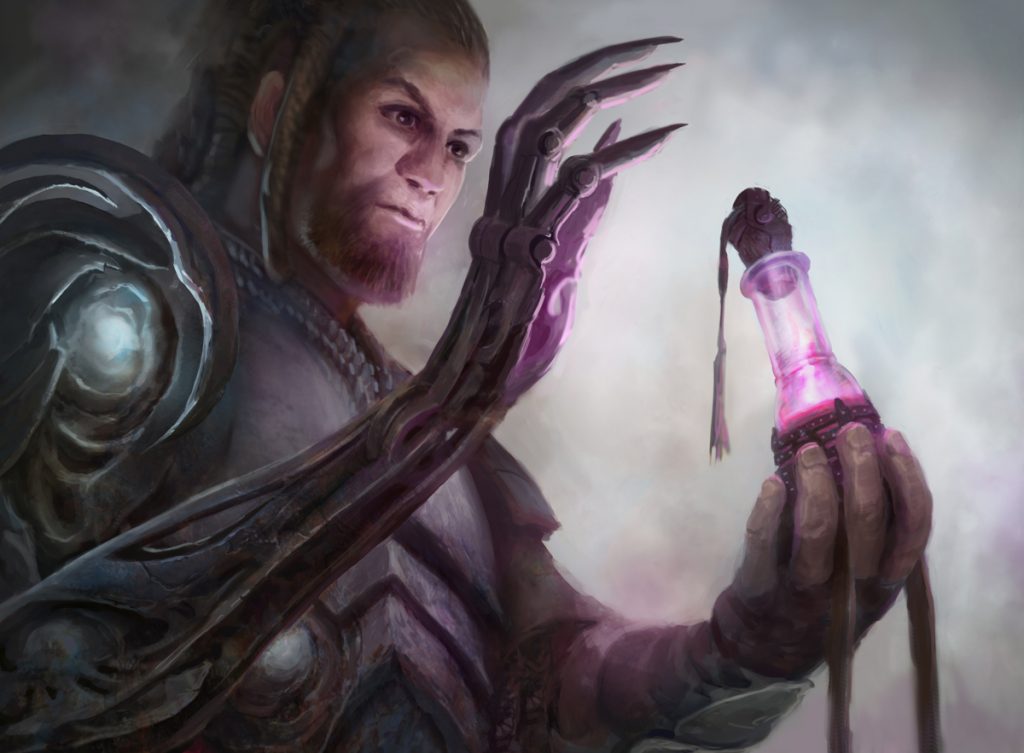
Thirst for Knowledge | Illustration by Anthony Francisco
While it's easy to pinpoint a deck as the best of the format in a given meta, it's certainly hard to recall how many times decks have broken it. I hope that with this little list, some of you may have recalled some memories, good or bad, about some of them.
What do you think? Did I happen to miss any that you would have loved to see? Let us know in the comments or over at the Draftsim Discord. If you liked the content and want to check out more, remember to follow us on X/Twitter to never miss an update.
Take care, and see you next time!
Follow Draftsim for awesome articles and set updates:
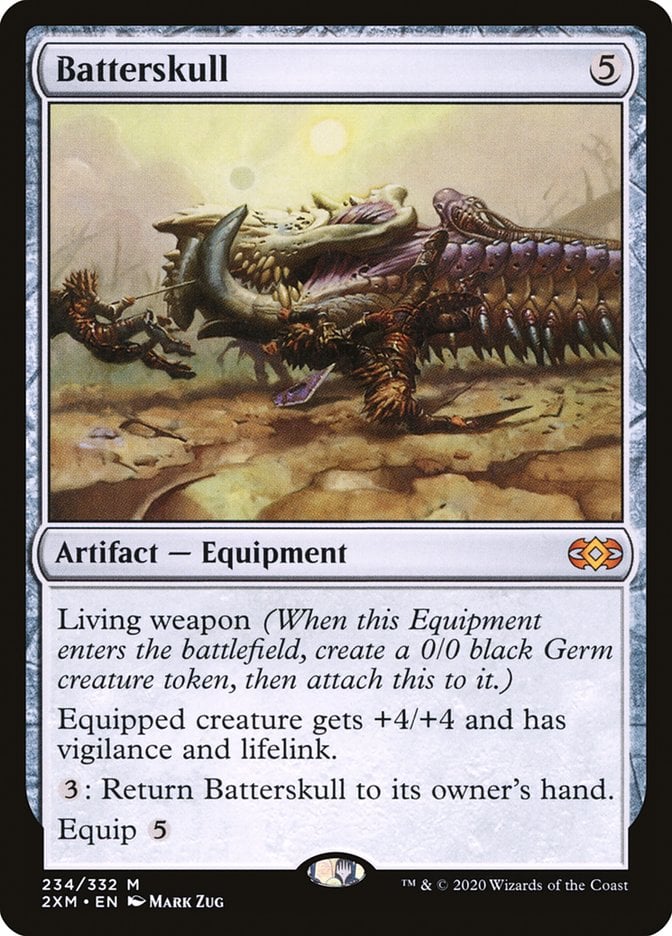
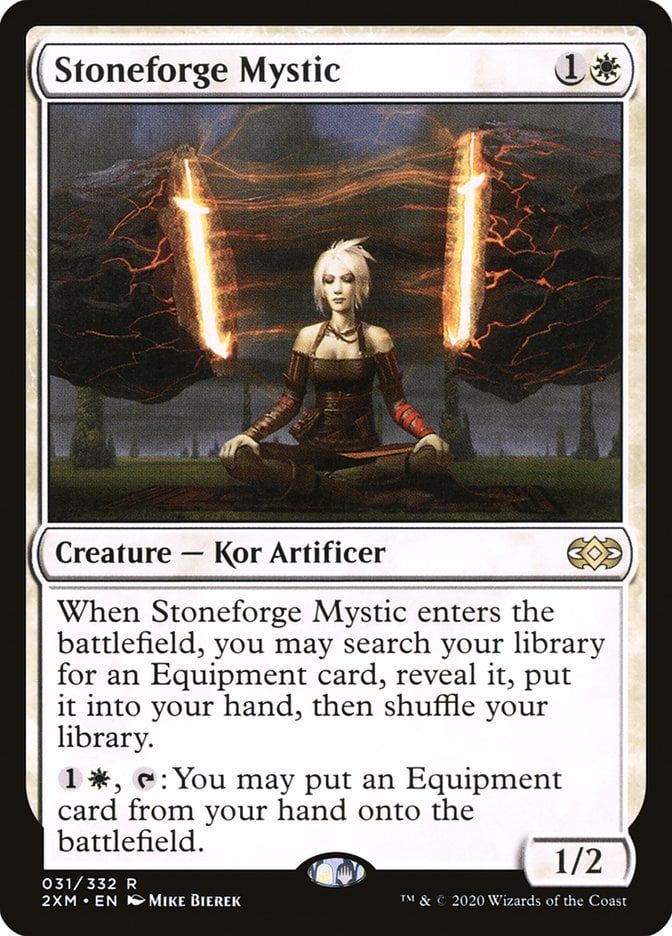
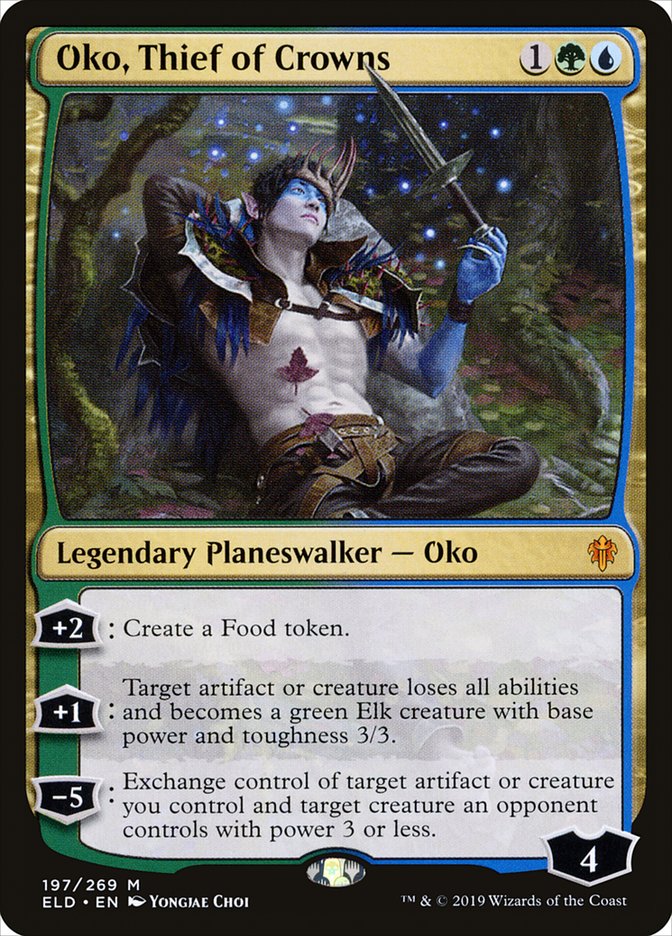
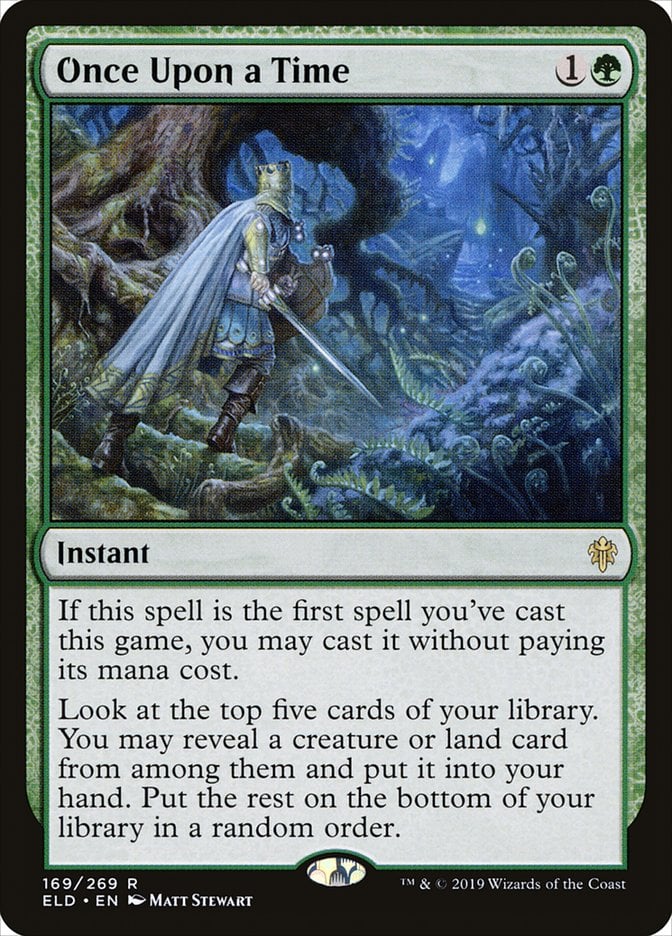
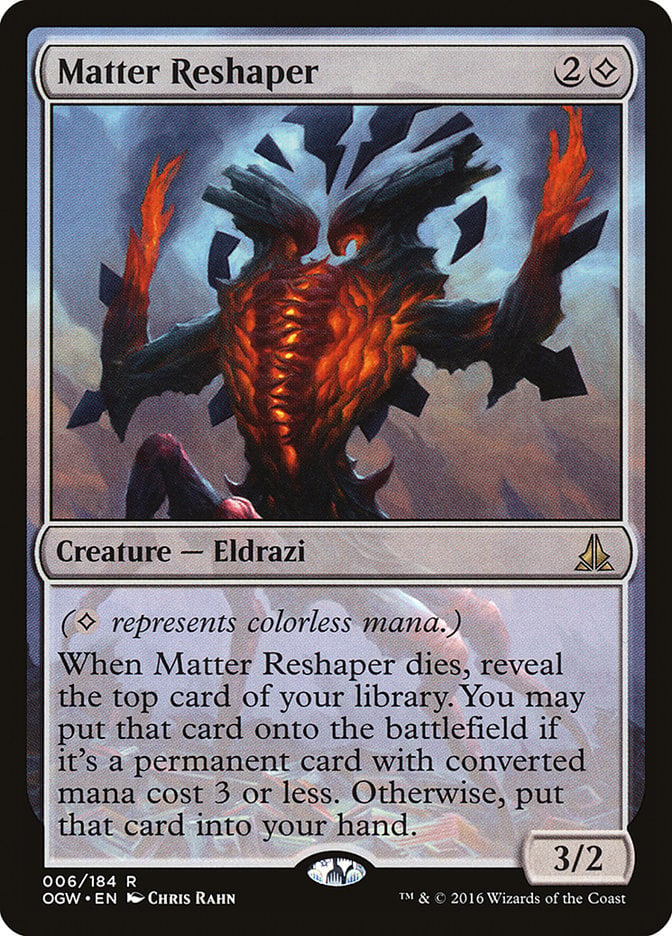

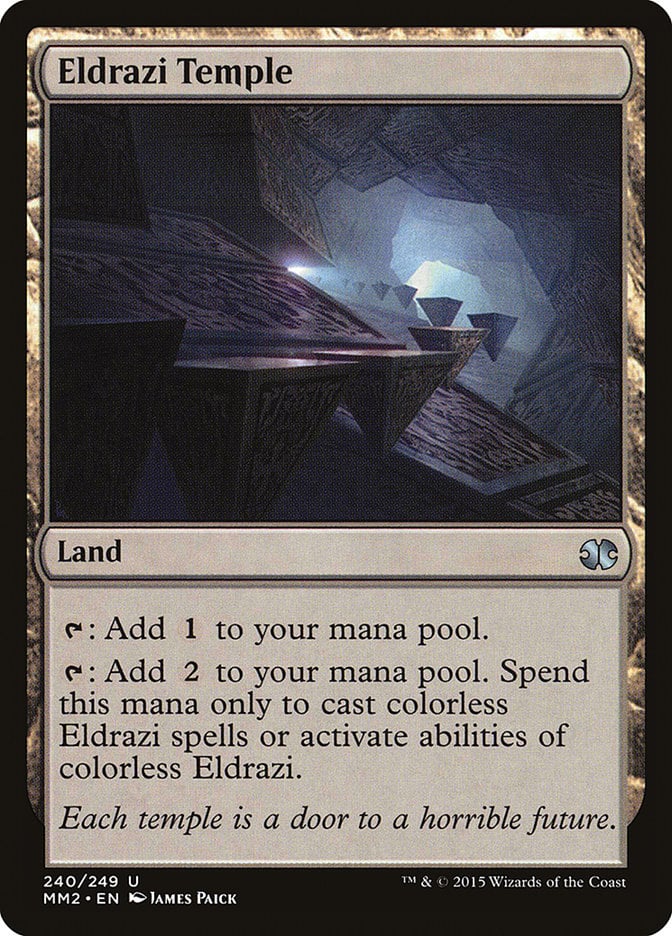

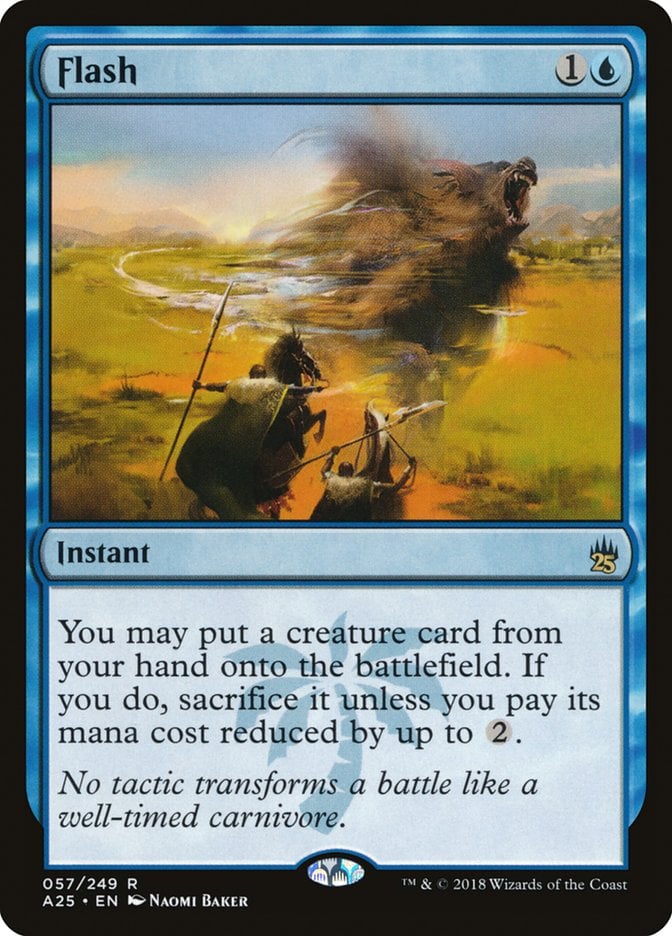

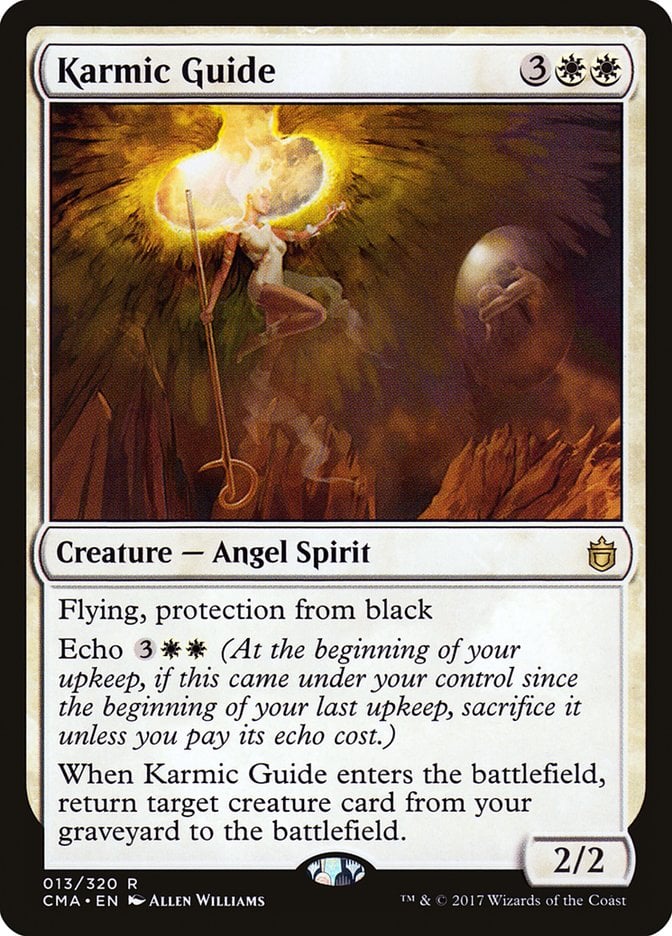
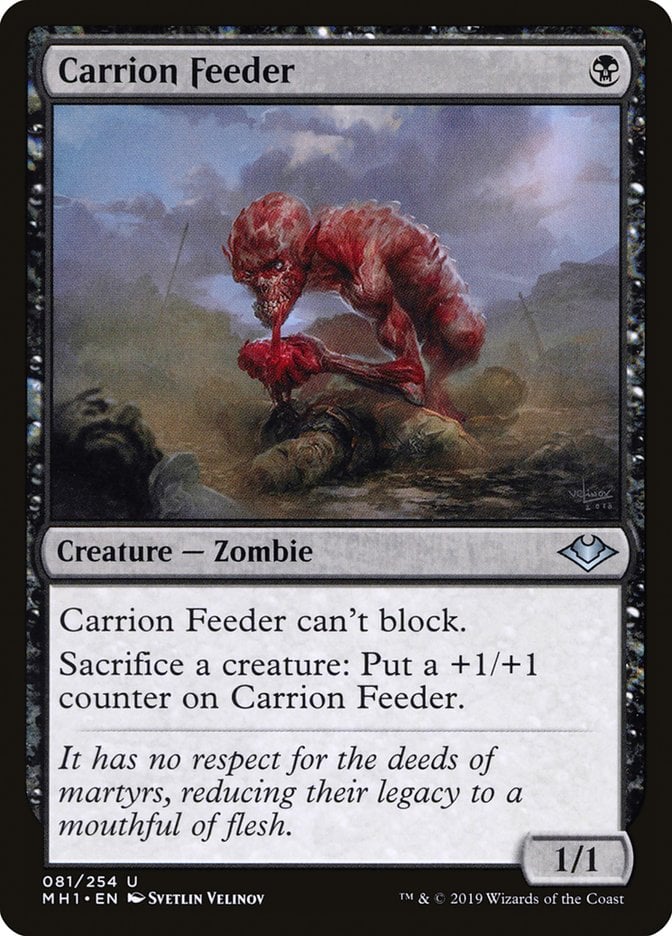
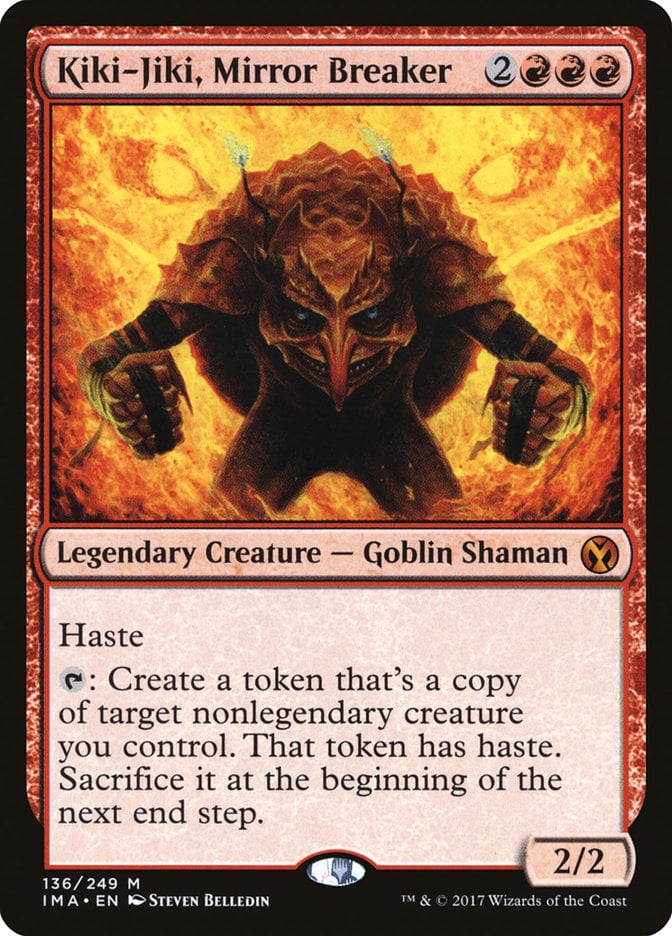
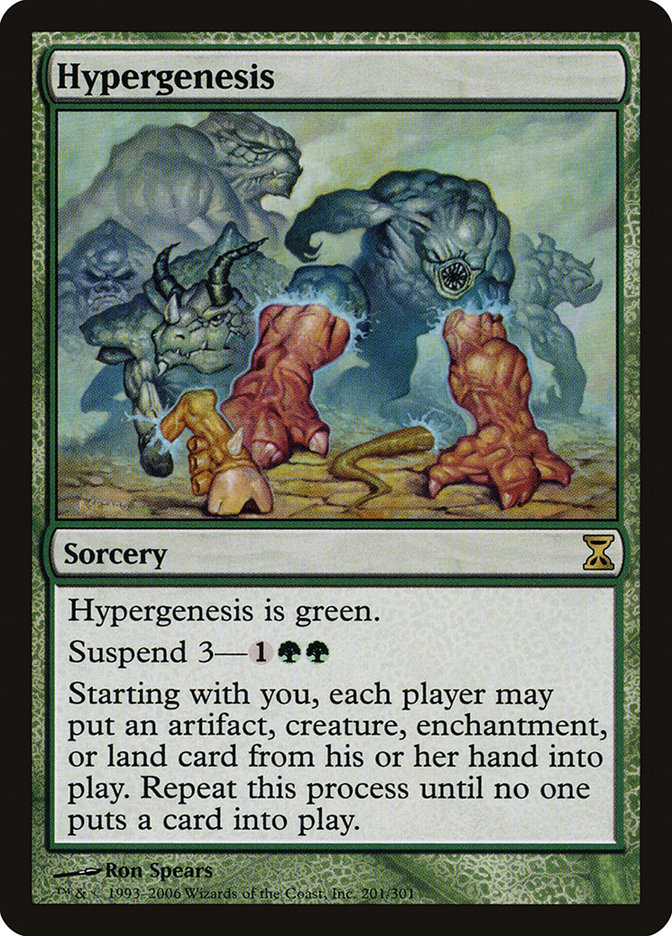
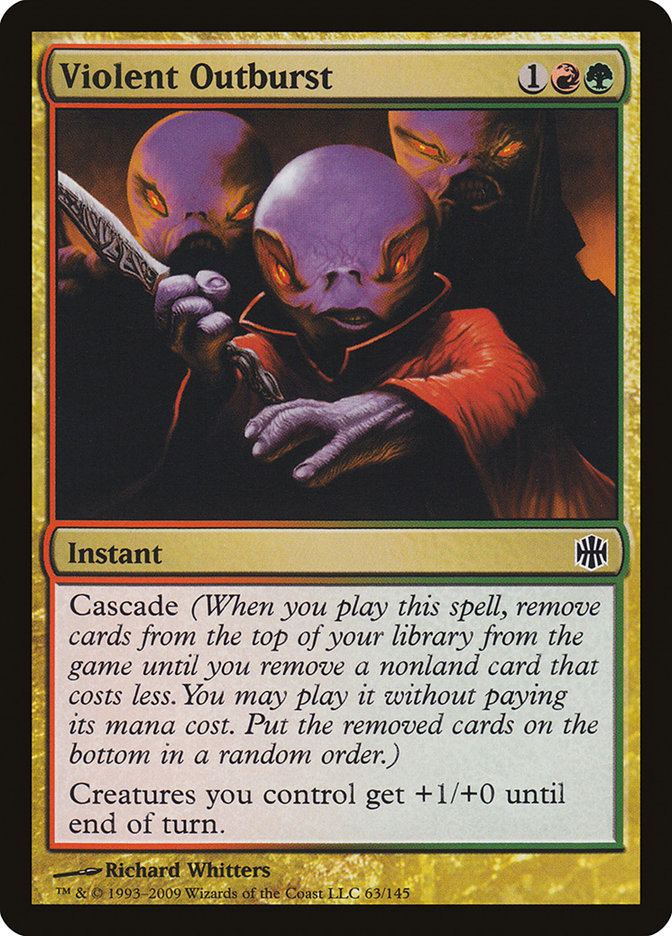
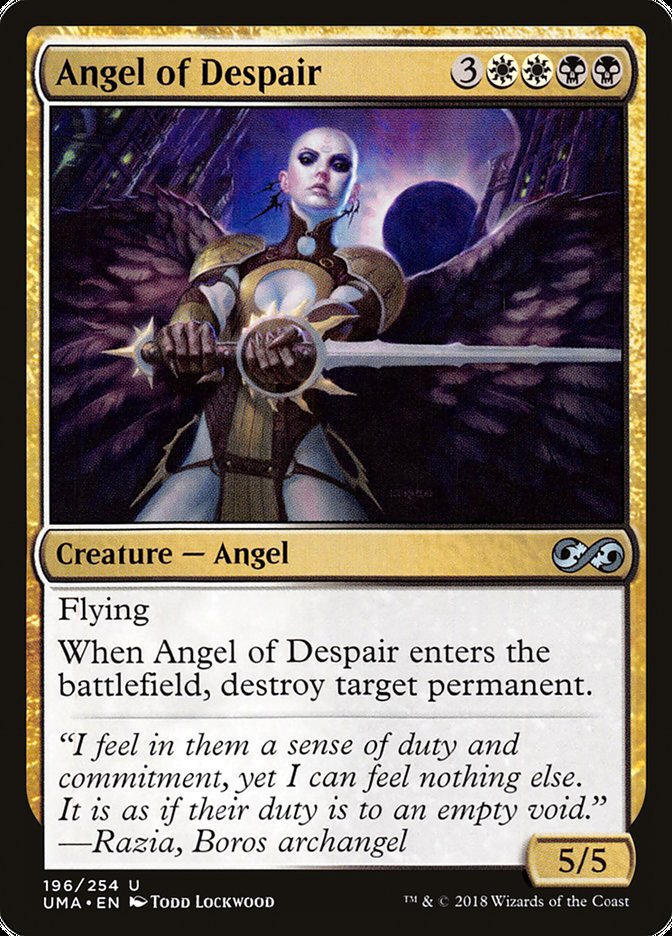
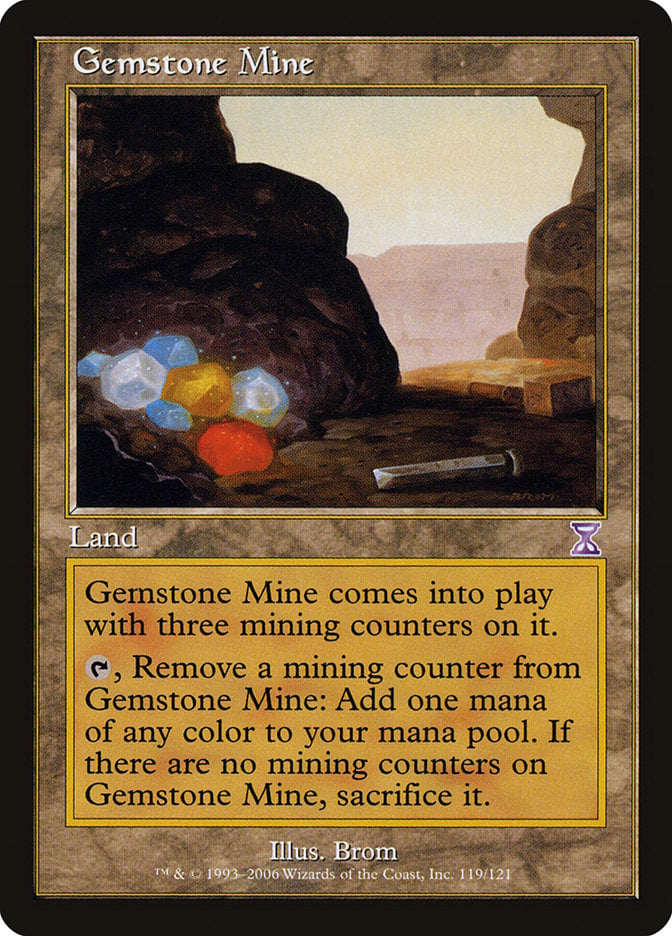
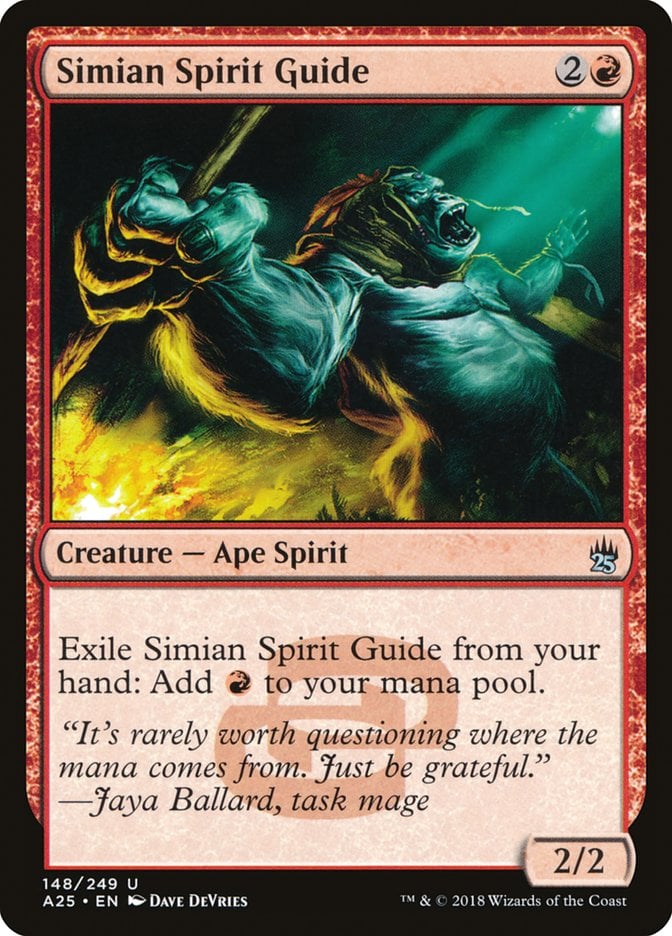
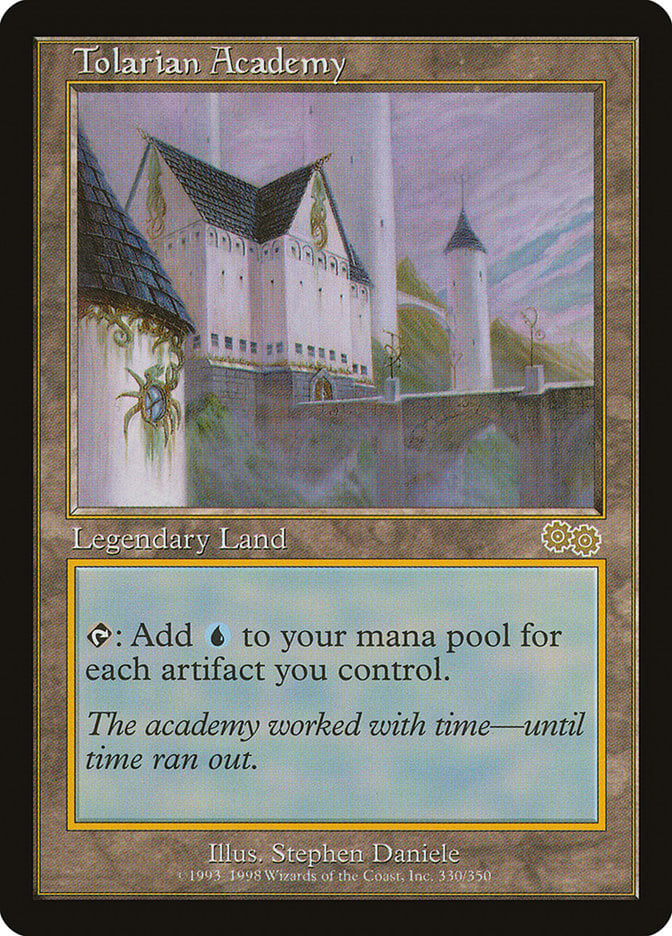
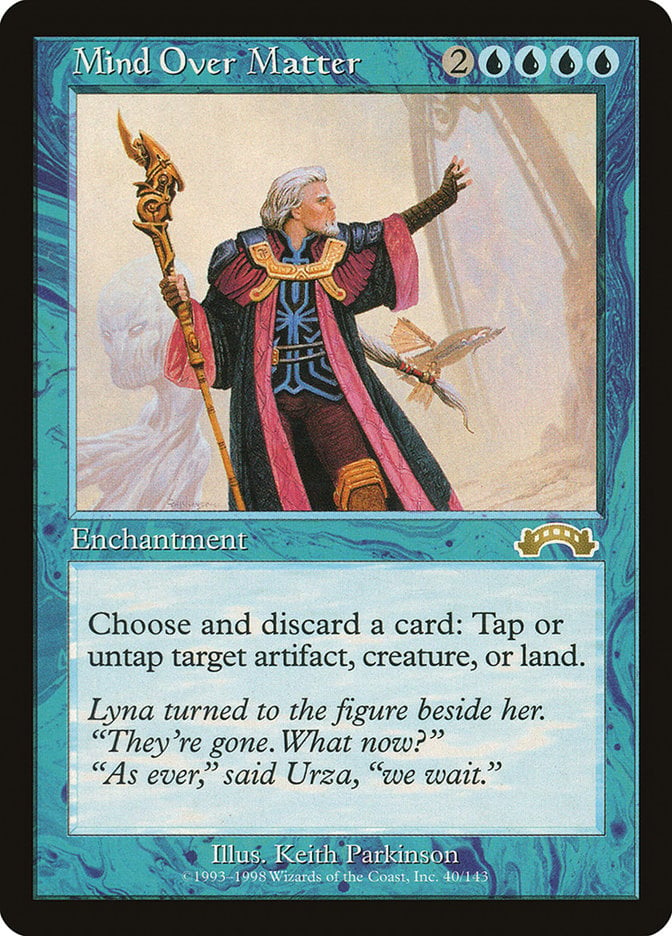
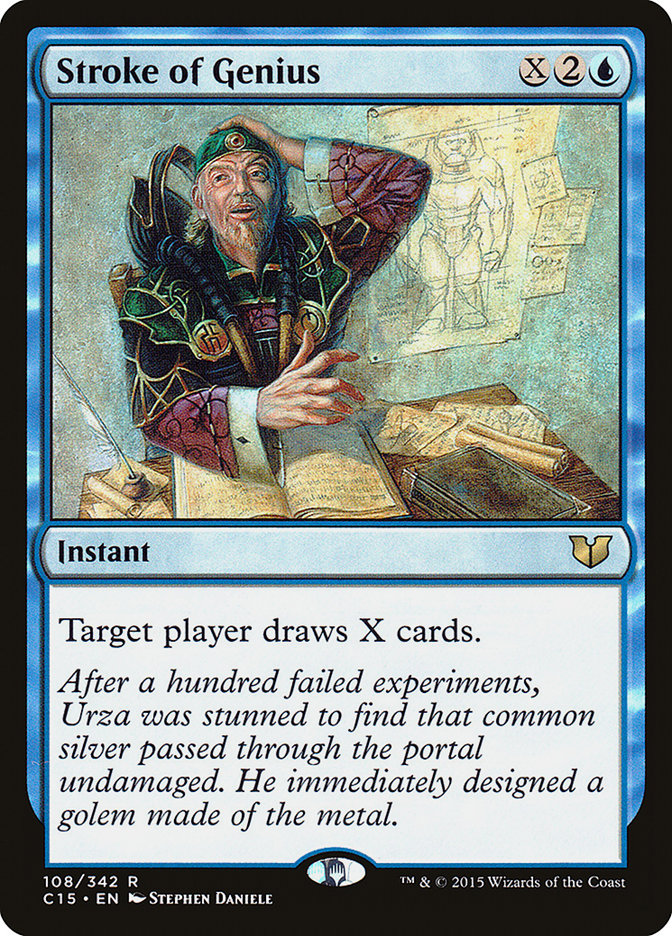
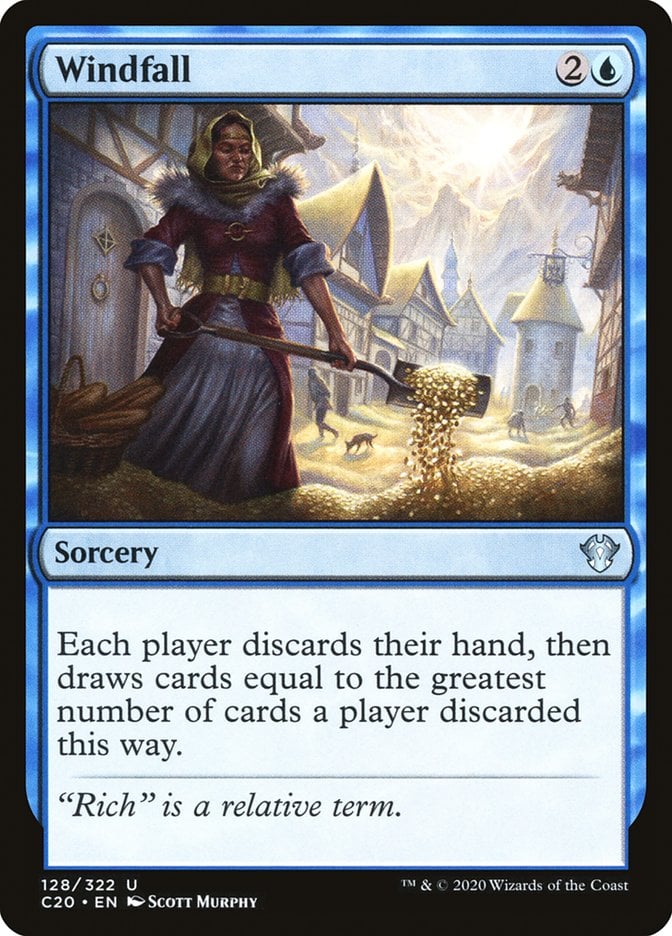

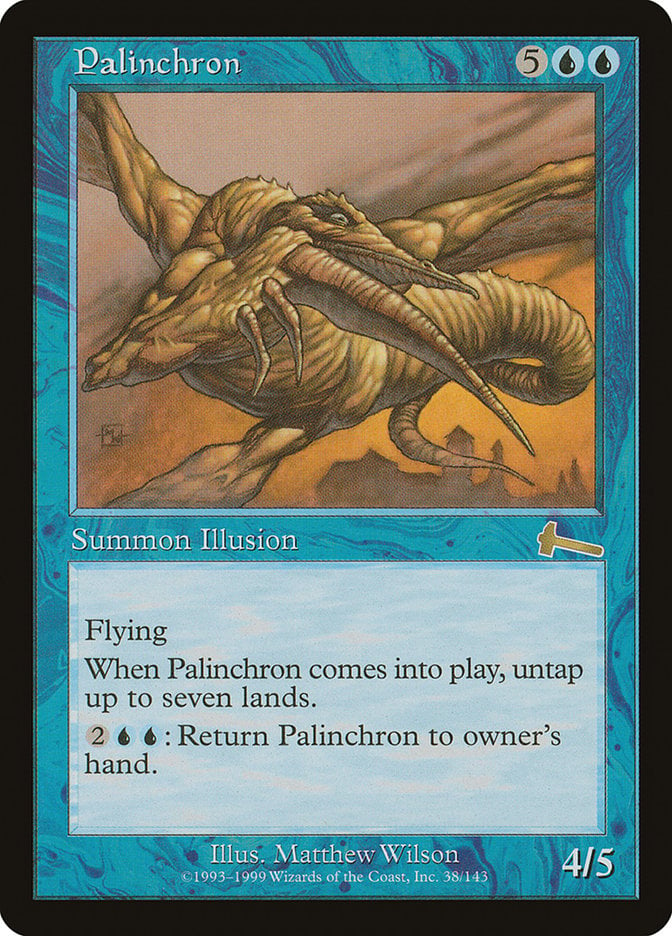
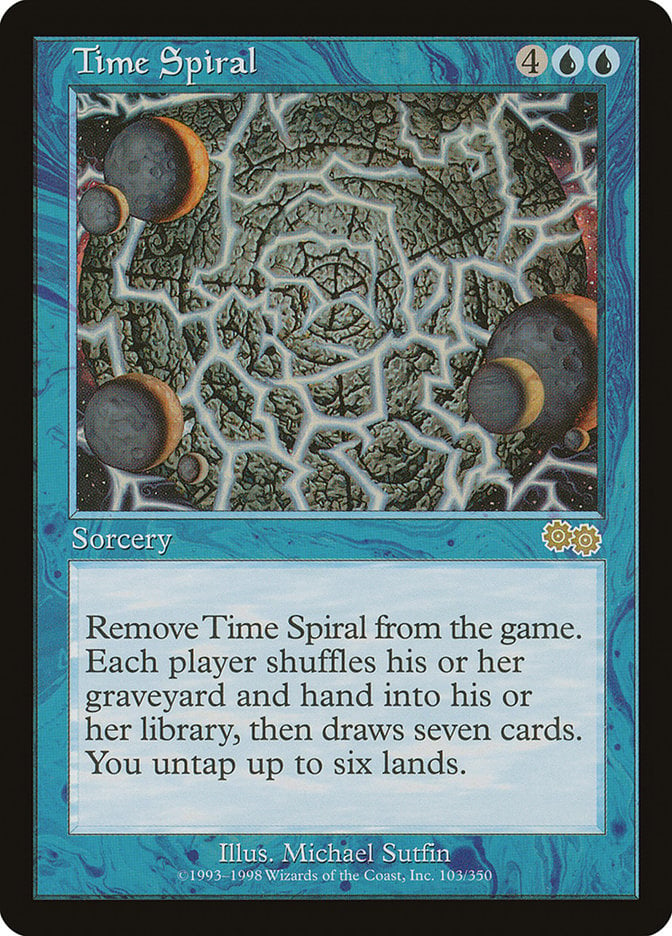
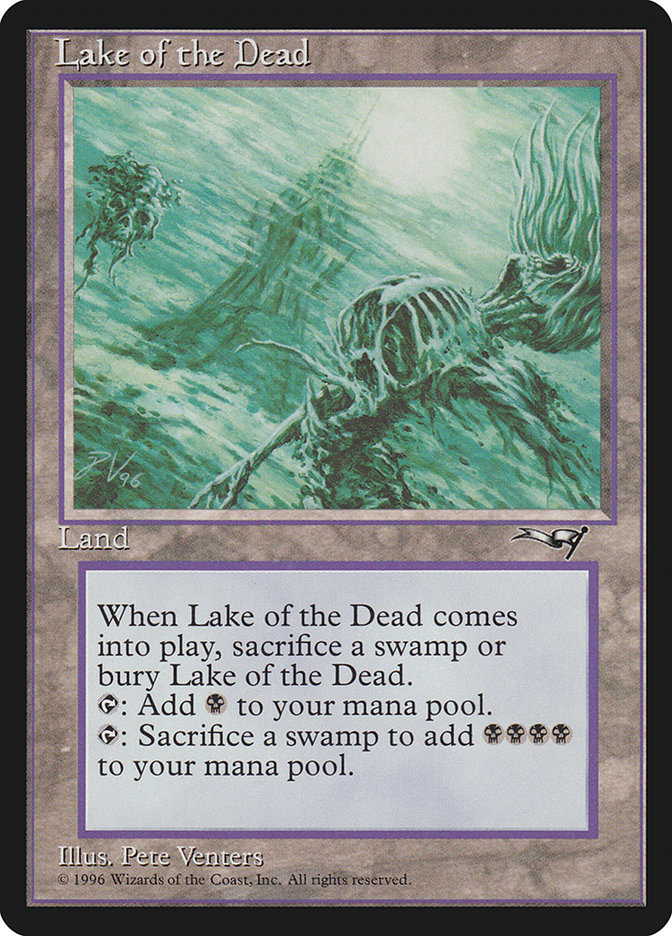

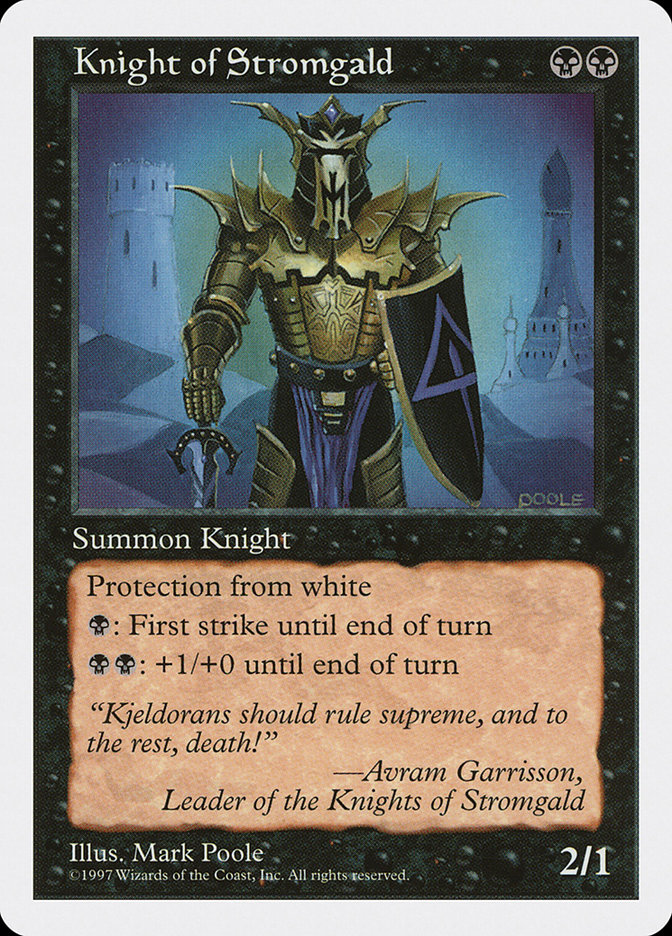
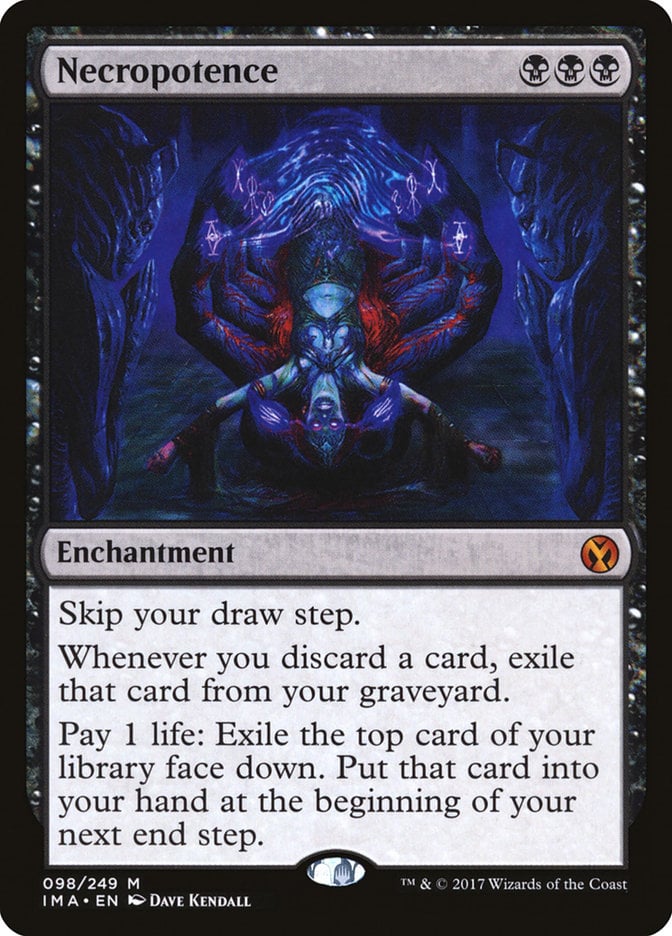

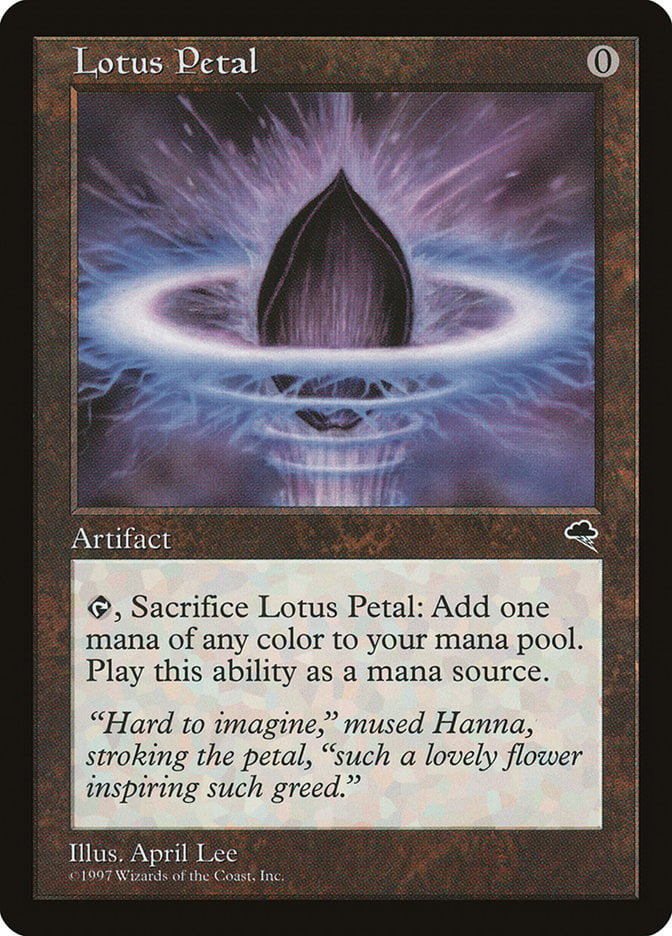
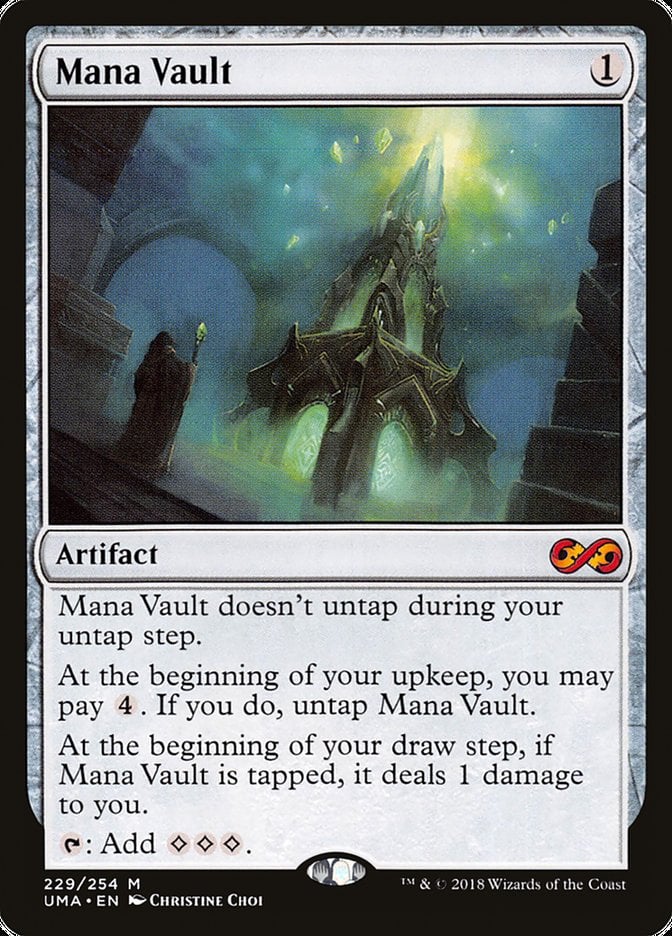
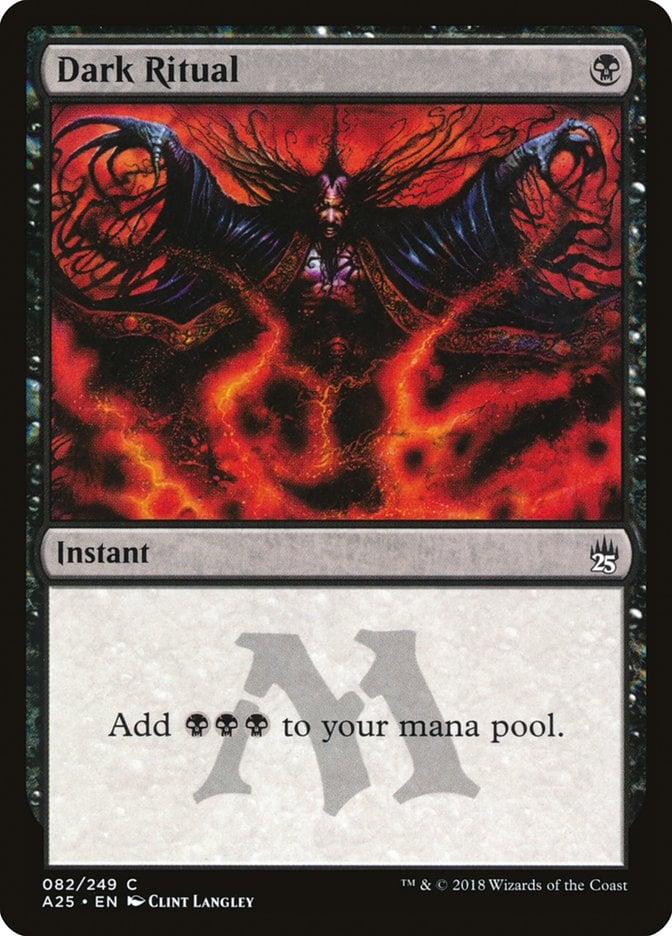

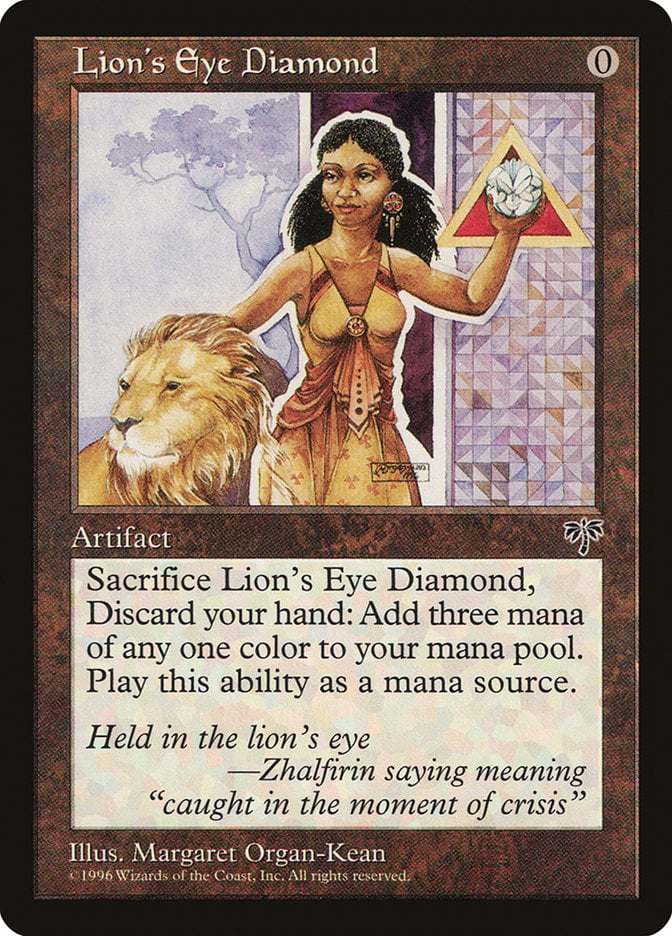
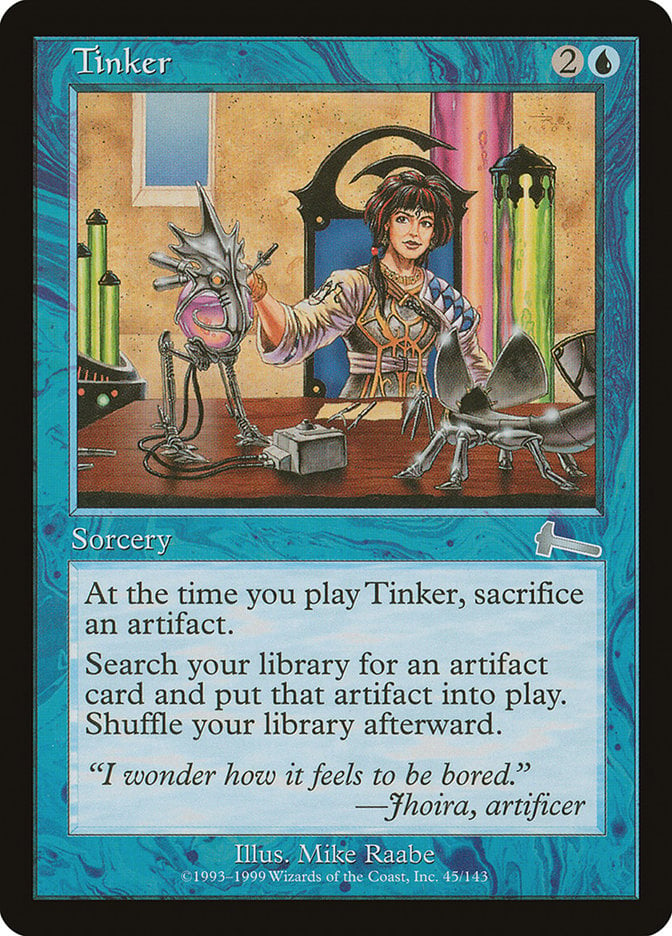
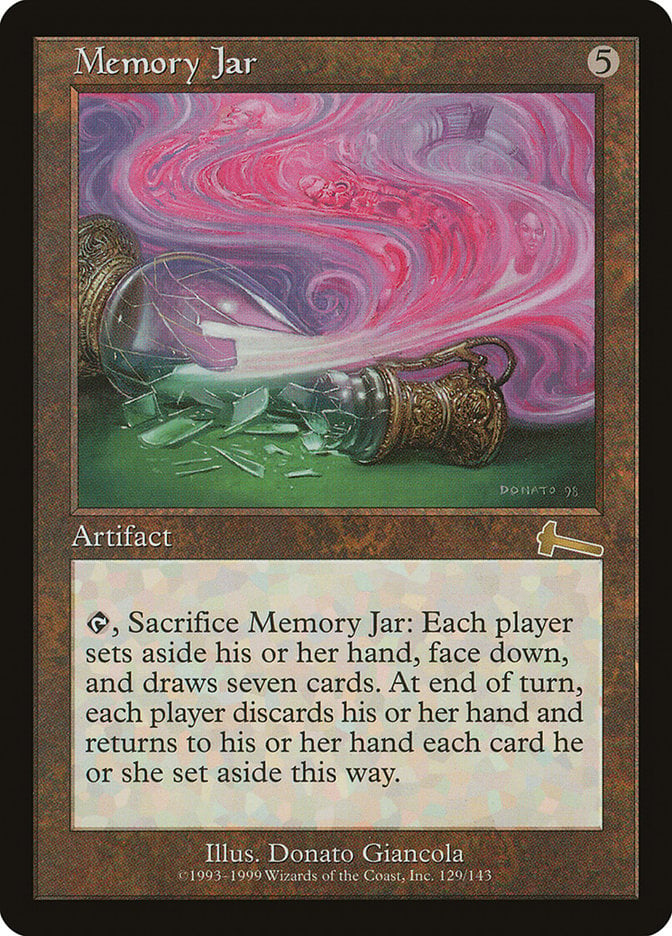
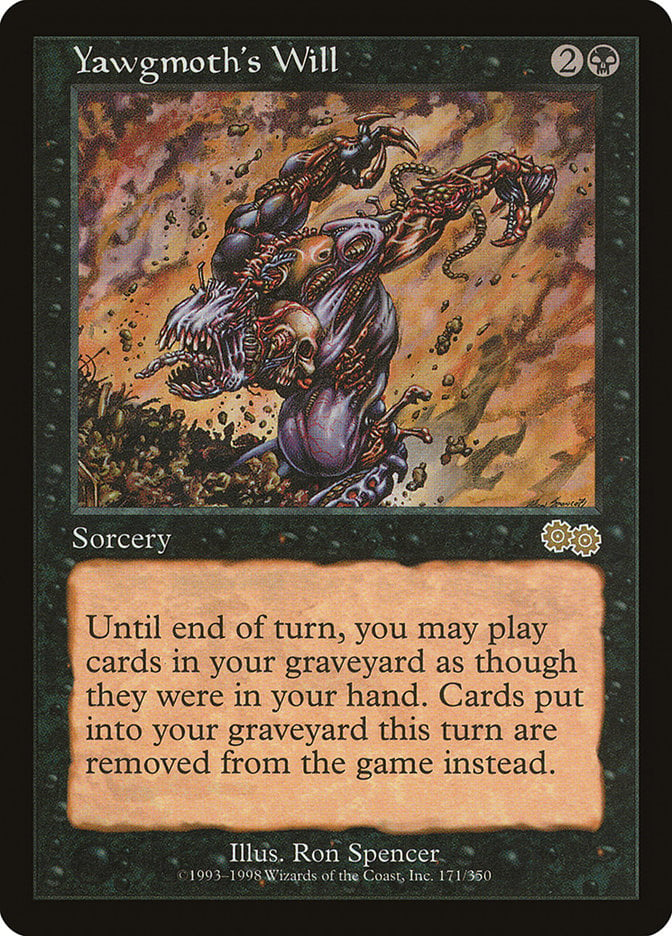
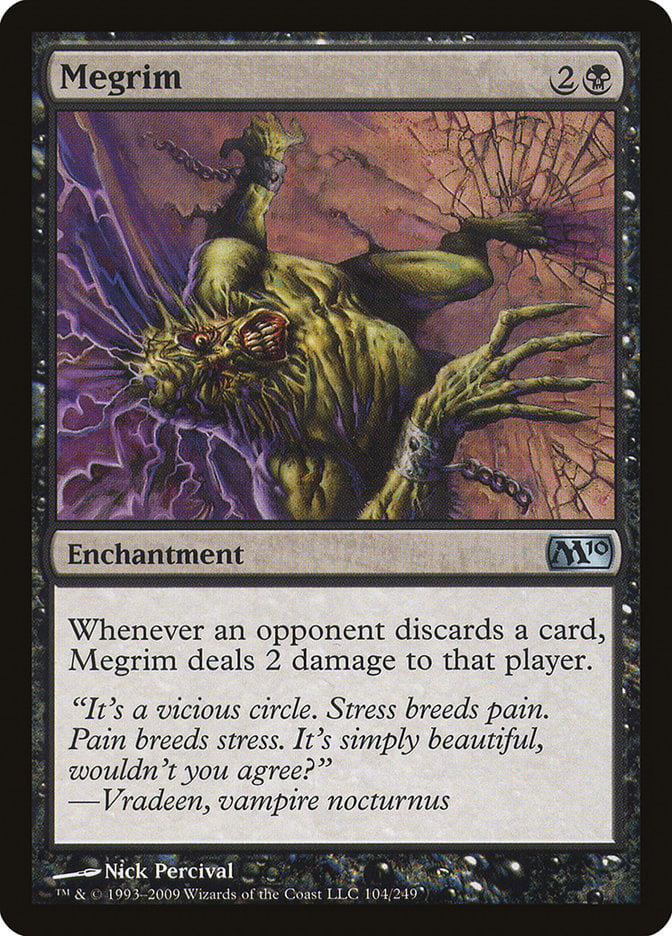
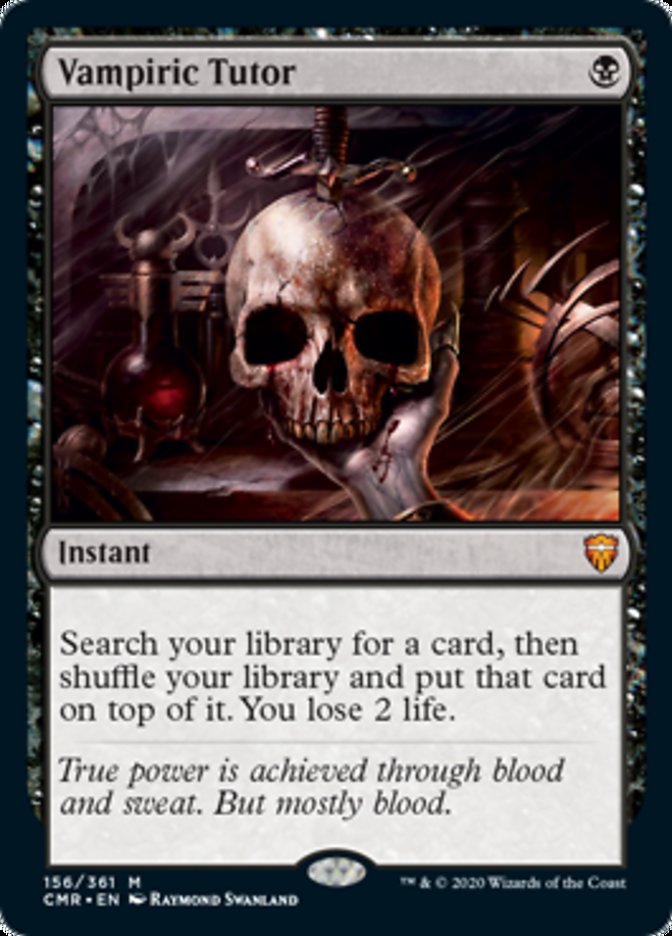


2 Comments
Just a small correction on the #11. Simic Oko section:
“The planeswalker, in particular, is a strong one that has been banned in almost every format it has touched, and it’s even restricted to one copy in Vintage.”
Oko has never been restricted in Vintage, Oath of Druids Combo and Sultai Midrange often play 3x copies of it.
Thanks Vladmir, this has been fixed.
Add Comment